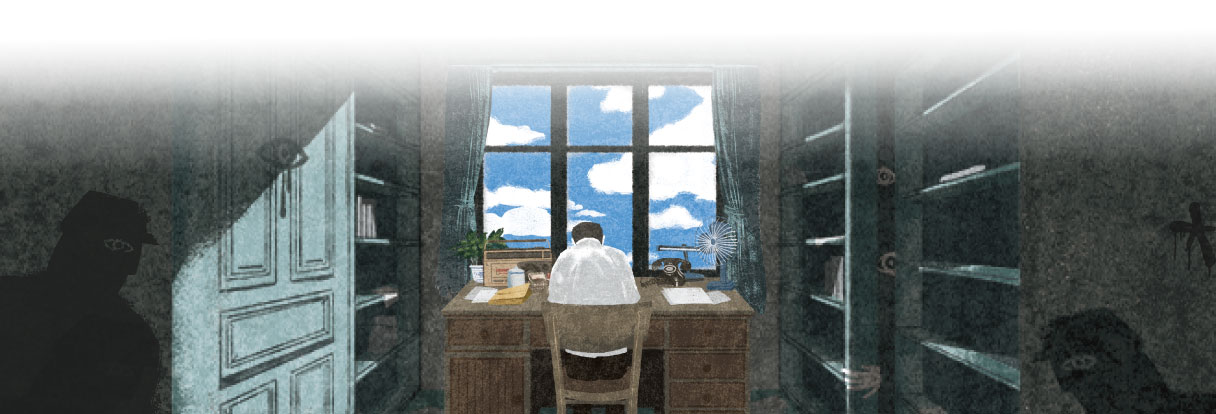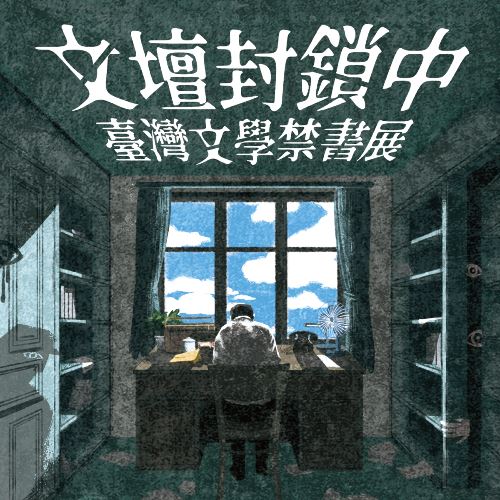
Writers Blocked: Special Exhibition of Once-banned Taiwan Literature
"Toxic" Ideas Officiously Expunged
Nothing "Red": Prohibition on Everything Leftist ⭔ Nothing "Yellow": Prohibition on Anything Erotic
⭔ Nothing "Black": Prohibition on Political and Party Scandal ⭔ "Fun Facts": The Suppression of "Being Taiwanese"
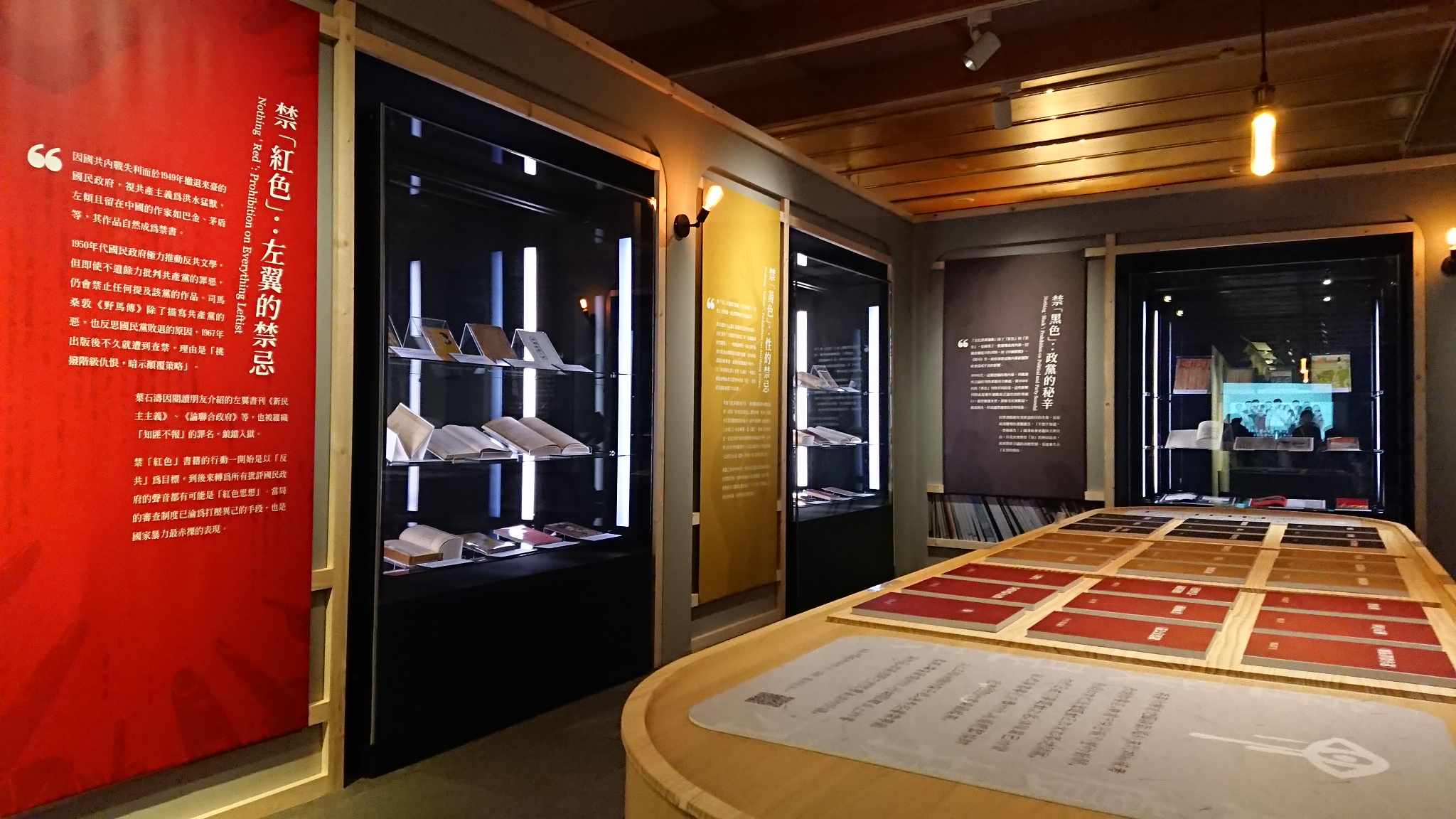
During the martial law period, the "Cultural Sanitation Campaign" in 1954 became the starting point of a series of book bans. This movement, initiated by the "Chinese Writers' & Artists' Association," utilized resources from the Nationalist party, the government, and the police to crack down on "red, yellow, and black" literary works.
"Red" was the representative color of communism; all writings involving "communist ideologies" were banned. "Yellow" refers to works involving obscenity. Any writing considered to "offend public decency" was banned. "Black" refers to works about undisclosed political stories or ones that damaged the image of the party. These writings were all targets of censorship.
The "Cultural Sanitation Campaign" ostensibly aimed to eradicate these "toxic" writings. In reality, it attempted to eradicate political dissent in the literary scene. Relevant censorship had been continuously carried out for several decades. Authors and publishers lived in fear of being unjustly implicated.
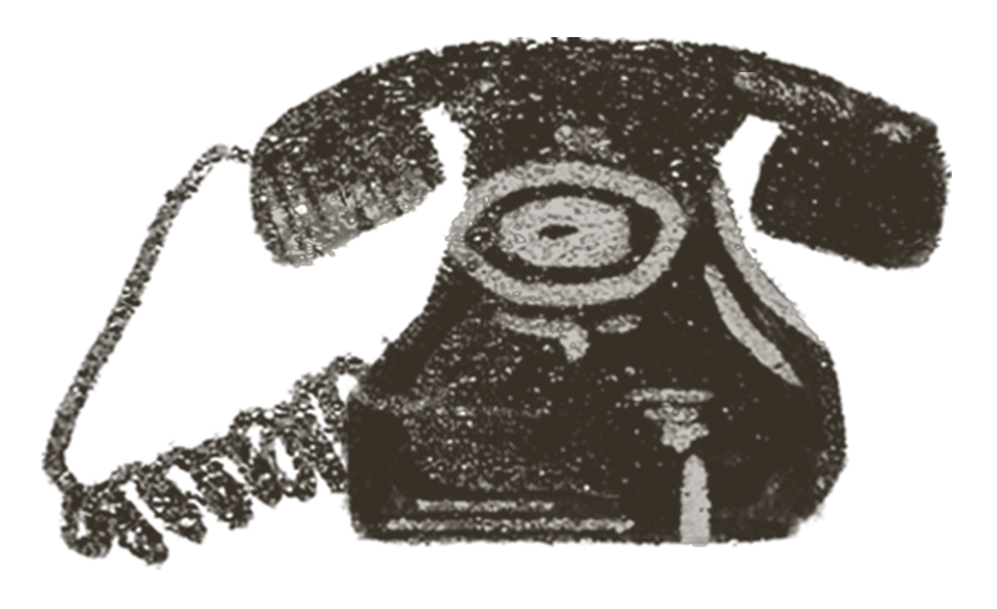 Nothing "Red": Prohibition on Everything Leftist
Nothing "Red": Prohibition on Everything Leftist
The Nationalist government, which fled to Taiwan in 1949 after losing the war against the Communist Party, saw Communism as a great danger. It was natural that works written by leftist writers that staying in China, such as Ba Jin and Mao Dun, were banned.
In the 1950s, the Nationalist government worked hard to promote anti-Communist literature. Except for lambasting how evil the Communist Party was, the Nationalist government also prohibited literary works mentioning the Communist Party. Ssu-ma Sang-tun's WILD HORSE not only describes the evil of the Communist Party, but also contemplates why KMT lost the war. Right after it was published in 1967, the book was banned for "instigating class hatred and indicating subversion."
Yeh Shih-tao was put in jail for "hiding communist activities" after reading the leftist books introduced by his friend, including NEW DEMOCRACY and ON COALITION GOVERNMENT. In the beginning, banning books involving Communism was to "fight against Communism." Later on, every writing against the Nationalist government was suspected of being Communist literature. Censorship imposed by the regime became a means to suppressing dissent. It was also a brutal portrayal of state violence.
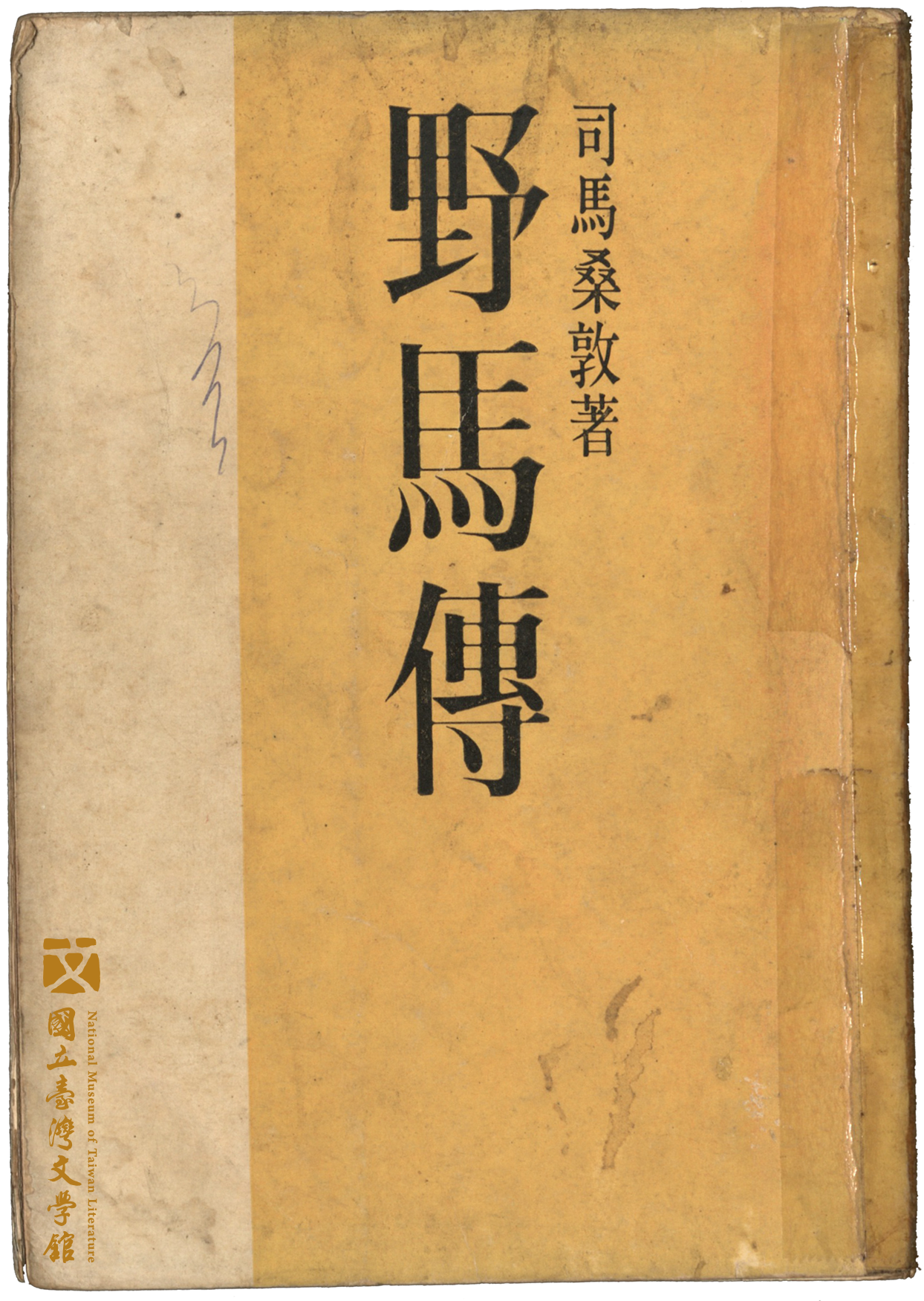
◰ Ssu-ma Sang-tun's WILD HORSE
The work was published in instalments in Hong Kong in 1958. Later on, the author commissioned Apollo Bookstore to publish the work in Taiwan in 1967 using his own money. Despite being an anti-Communism book, it was banned for instigating class hatred right after being published.(Authorized by Ying Fenghuang)
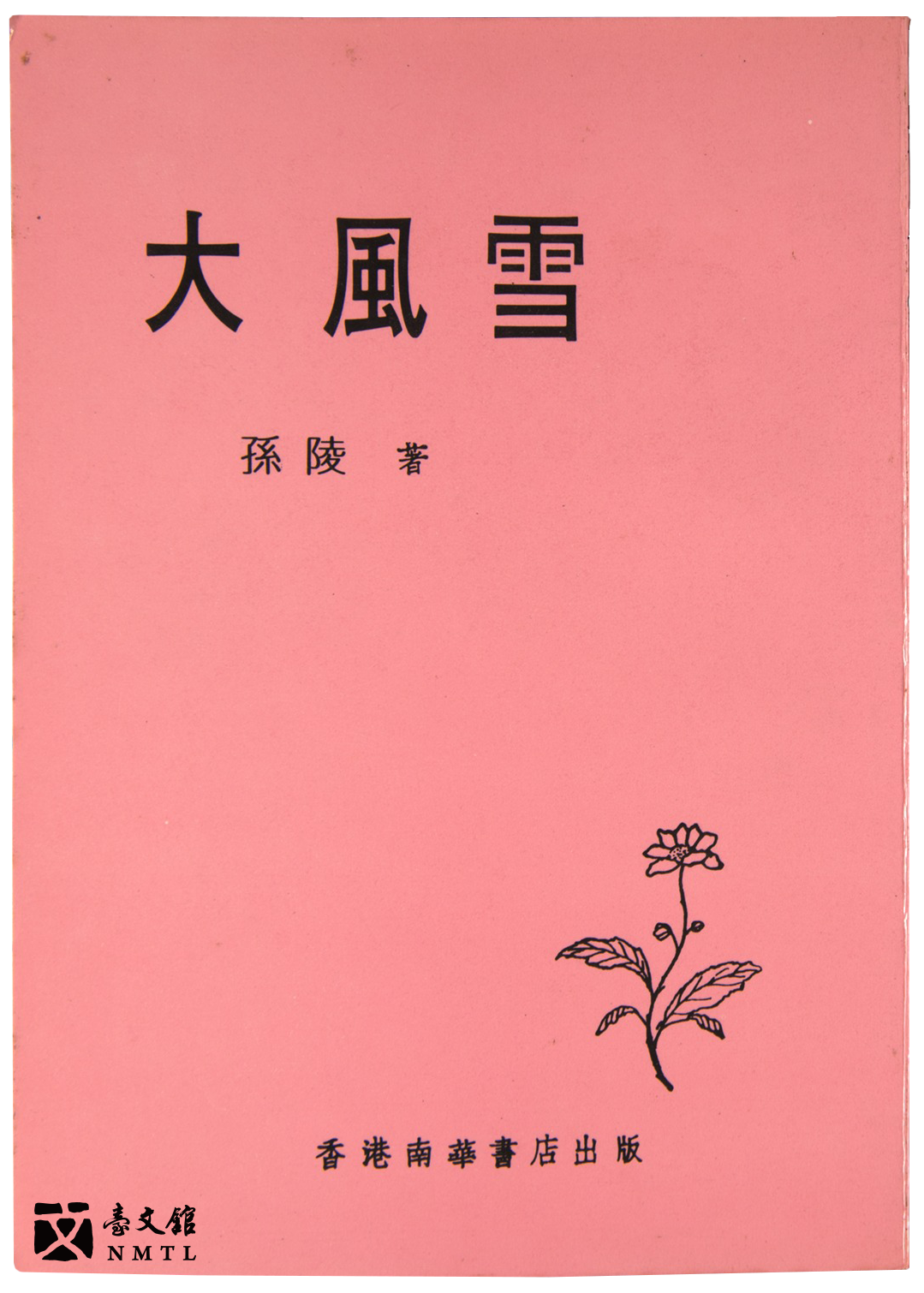
◰ Sun Ling's SNOWSTORM
This books was published in 1947. It is set in Harbin during the Mukden Incident in 1931. However, the book was banned in 1956 because of containing too many terms commonly used by communists. Based on later research, another possible reason for the banning of Sun Lin's works could be the conflicts within the Chinese Writers' & Artists' Association.(Kept in National Museum of Taiwan Literature)
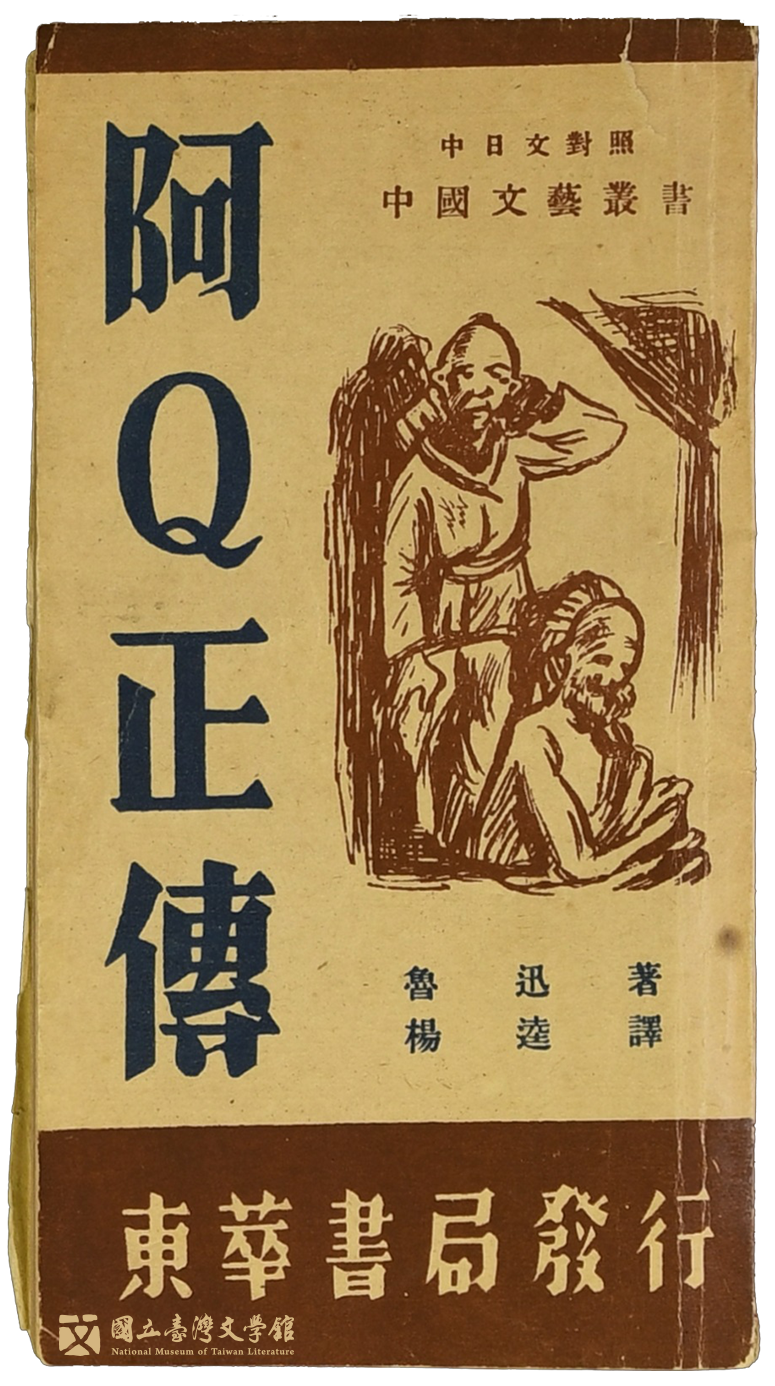

◰ THE TRUE STORY OF AH Q
Due to the Chinese communist party's high praise for Lu Xun and how his works criticize the political situation and regime, Lu Xun's works soon became banned after martial law came into force.(Kept in National Museum of Taiwan Literature)
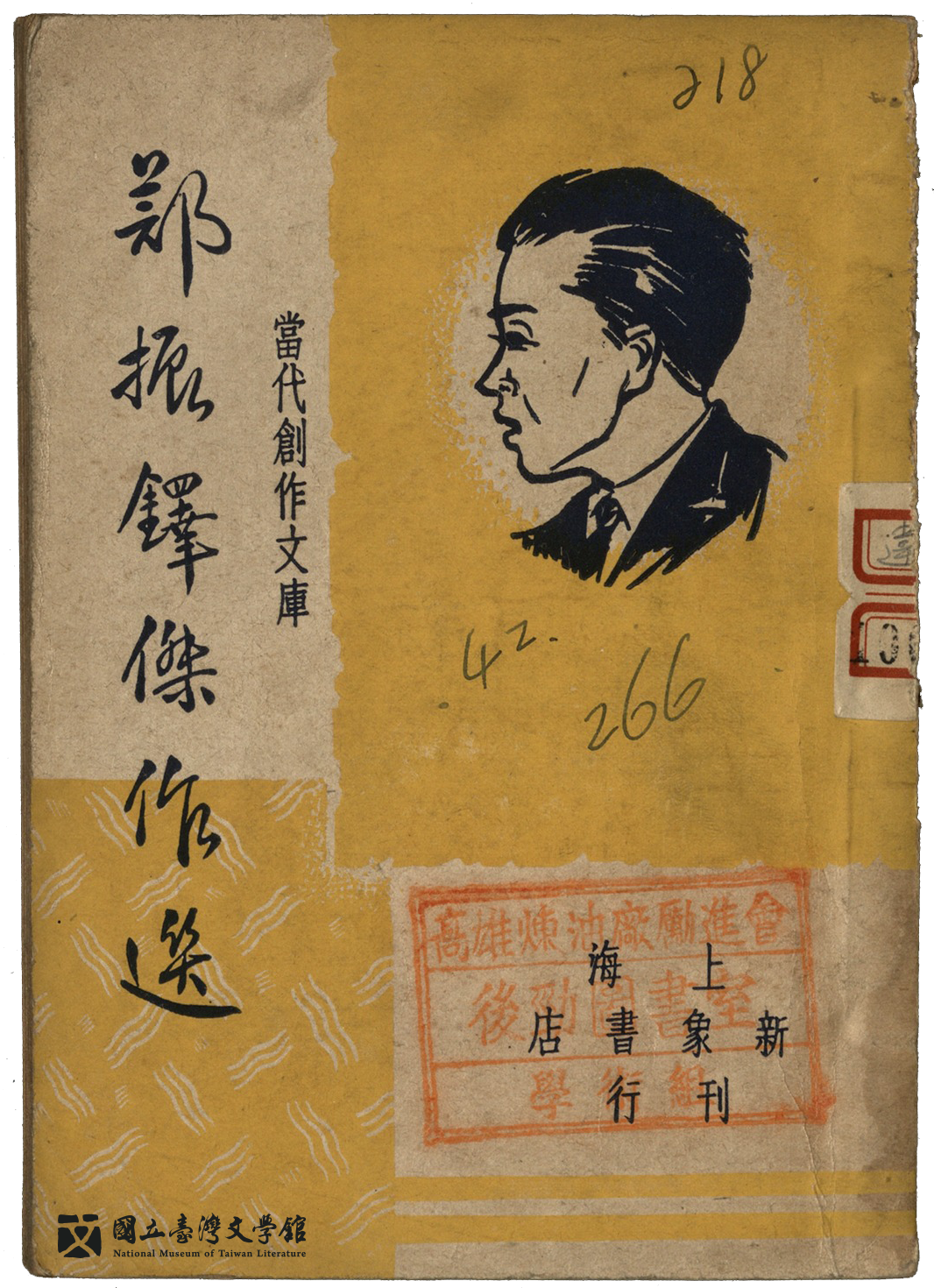
◰ A SELECTION OF ZHENG ZHEN-DUO'S BEST WORKS
Since Zheng held left-wing political views and acted as a senior official for the Chinese Communist Party; he was seen as "a major Communist enemy." To prohibit communist beliefs from penetrating society, all of Zheng's works were banned.(Kept in National Museum of Taiwan Literature)
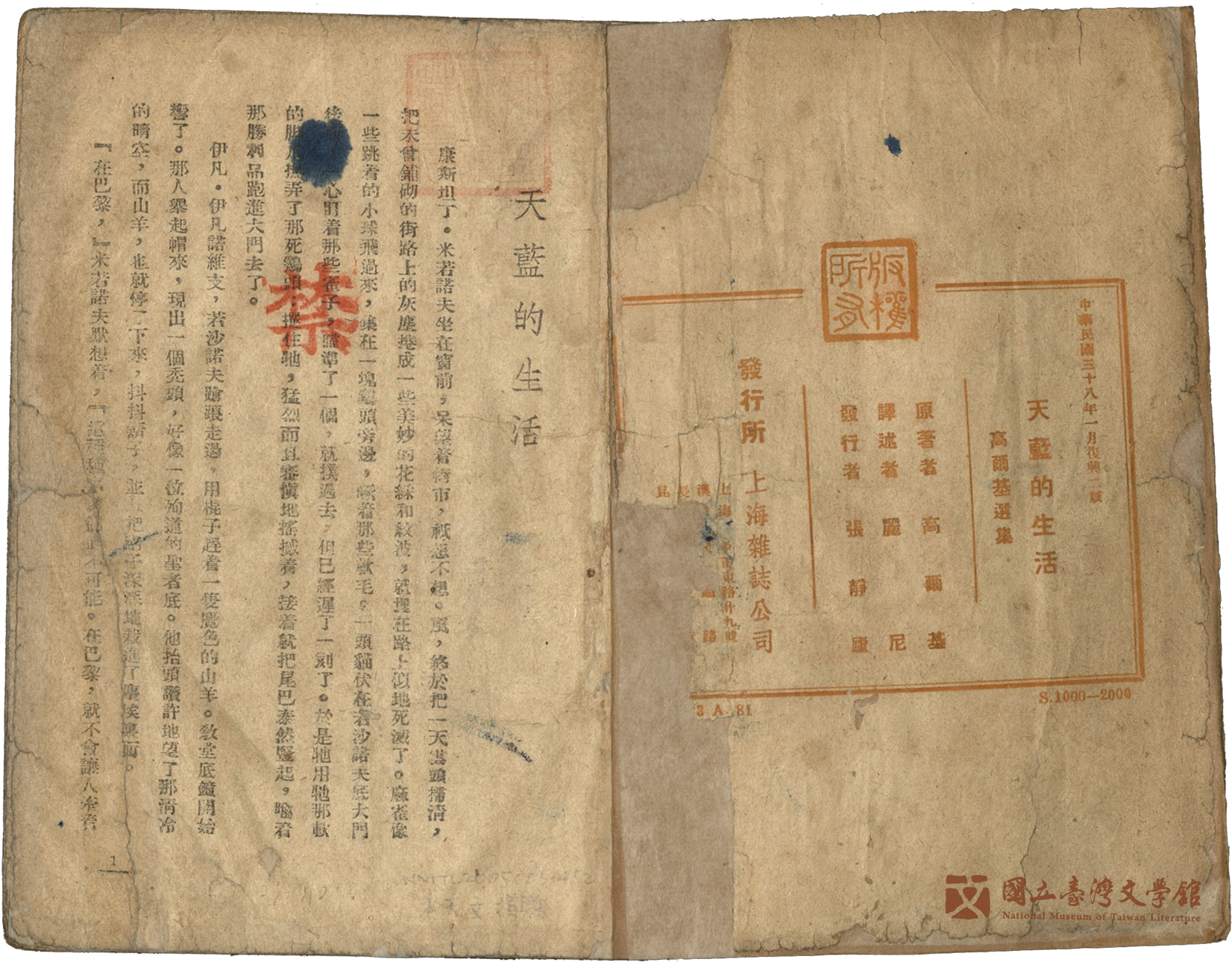
◰ BLUE SKY—A SELECTION OF MAXIM GORKY'S WORKS
The Nationalist government held views in opposition to the Communist Party. Works from the Soviet Union were considered promoting Communist ideologies. Gorky's works were banned as they were strongly promoted by the Soviet Union and the Chinese Communist Party.(Kept in National Museum of Taiwan Literature)
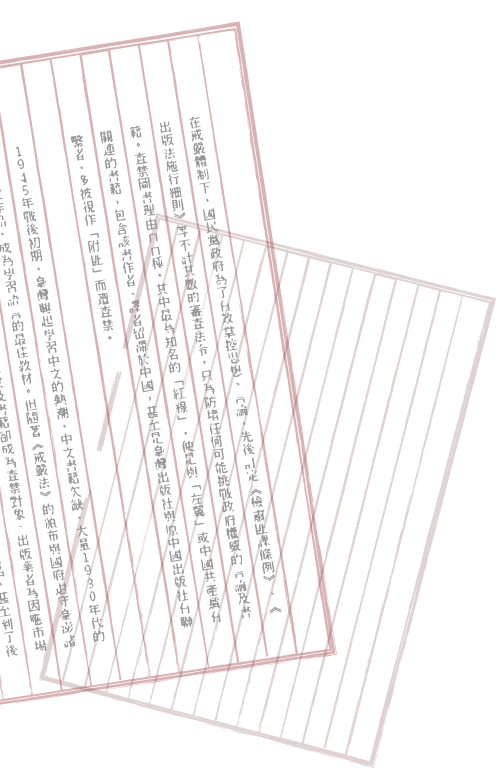
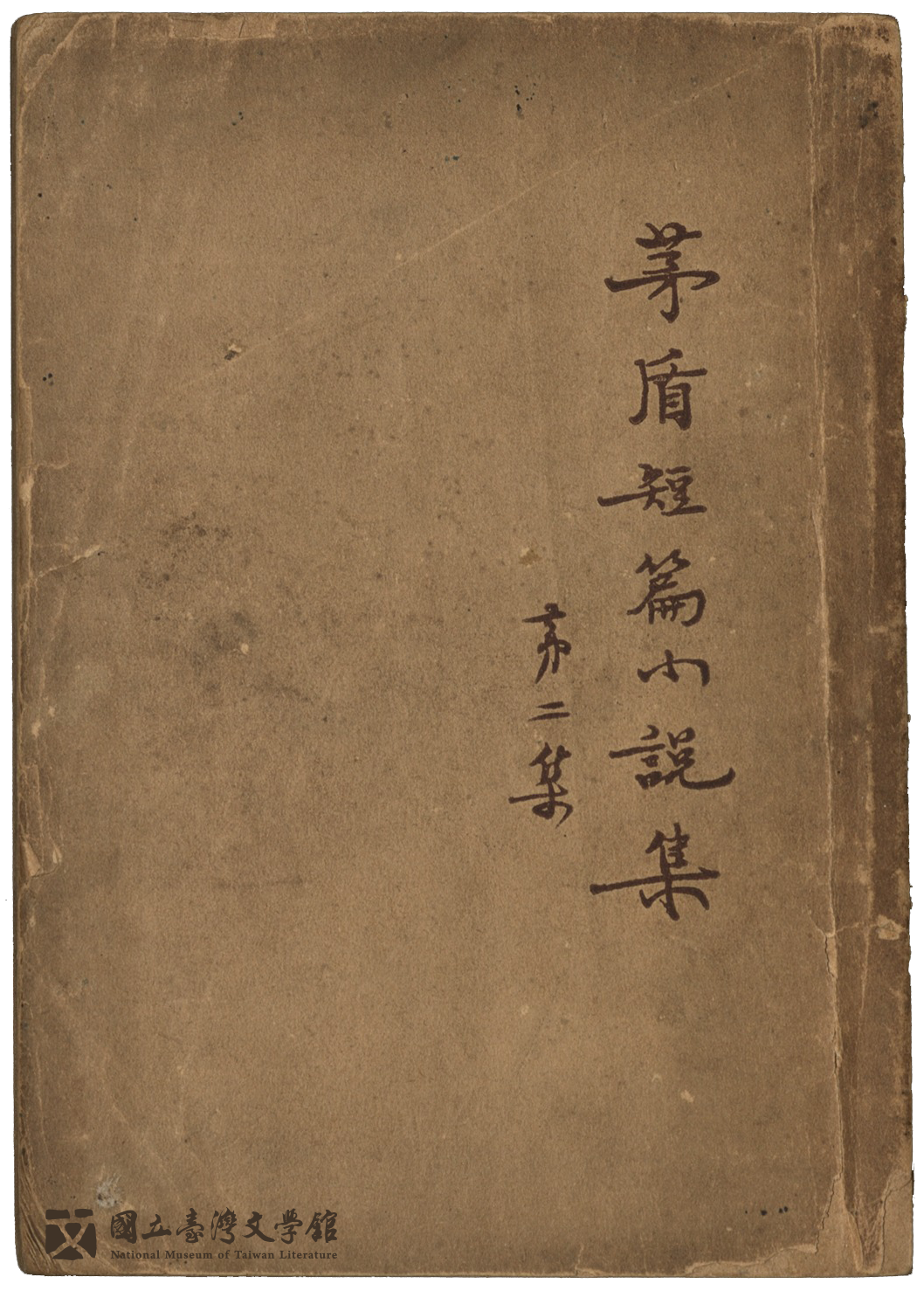
◰ SHORT NOVELS BY MAO DUN (Vol.2)
Mao Dun was a representative writer of the May Fourth Movement. His literary views were inclined towards proletarian. Acting as a senior official for the Chinese Communist government after the civil war, Mao Dun was seen as a promoter of Communism by the Nationalist government and thus his works were banned.(Kept in National Museum of Taiwan Literature)
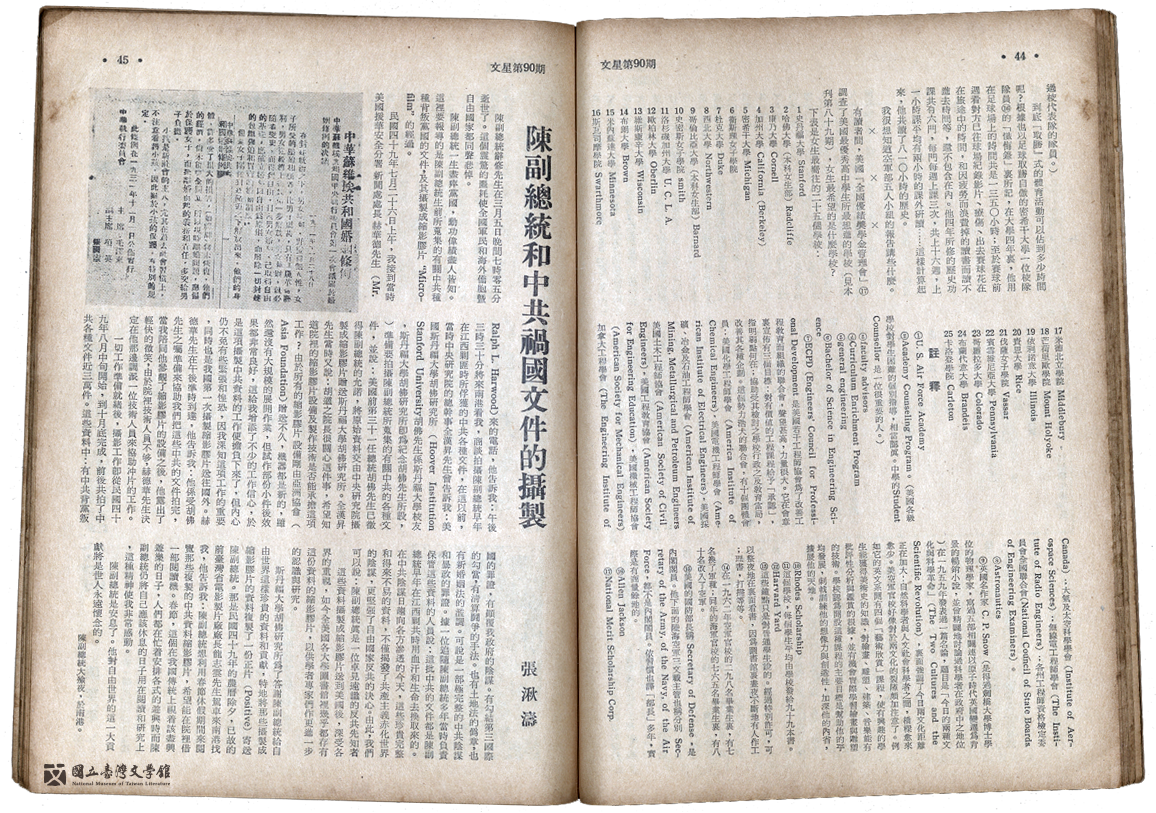
◰ "Filming of Vice President Chen Cheng and Documents on The Communist Rebellion."
The 90th issue of APOLLO MAGAZINE reported Vice President Chen Cheng's collection of documents regarding the Communist rebellion in the earlier years of "fighting Communism." The article was supposed to commemorate Chen Cheng after his passing; however, it was banned for the reason that it "promoted Communism."(From the collection of the library at the National Museum of Taiwan Literature)
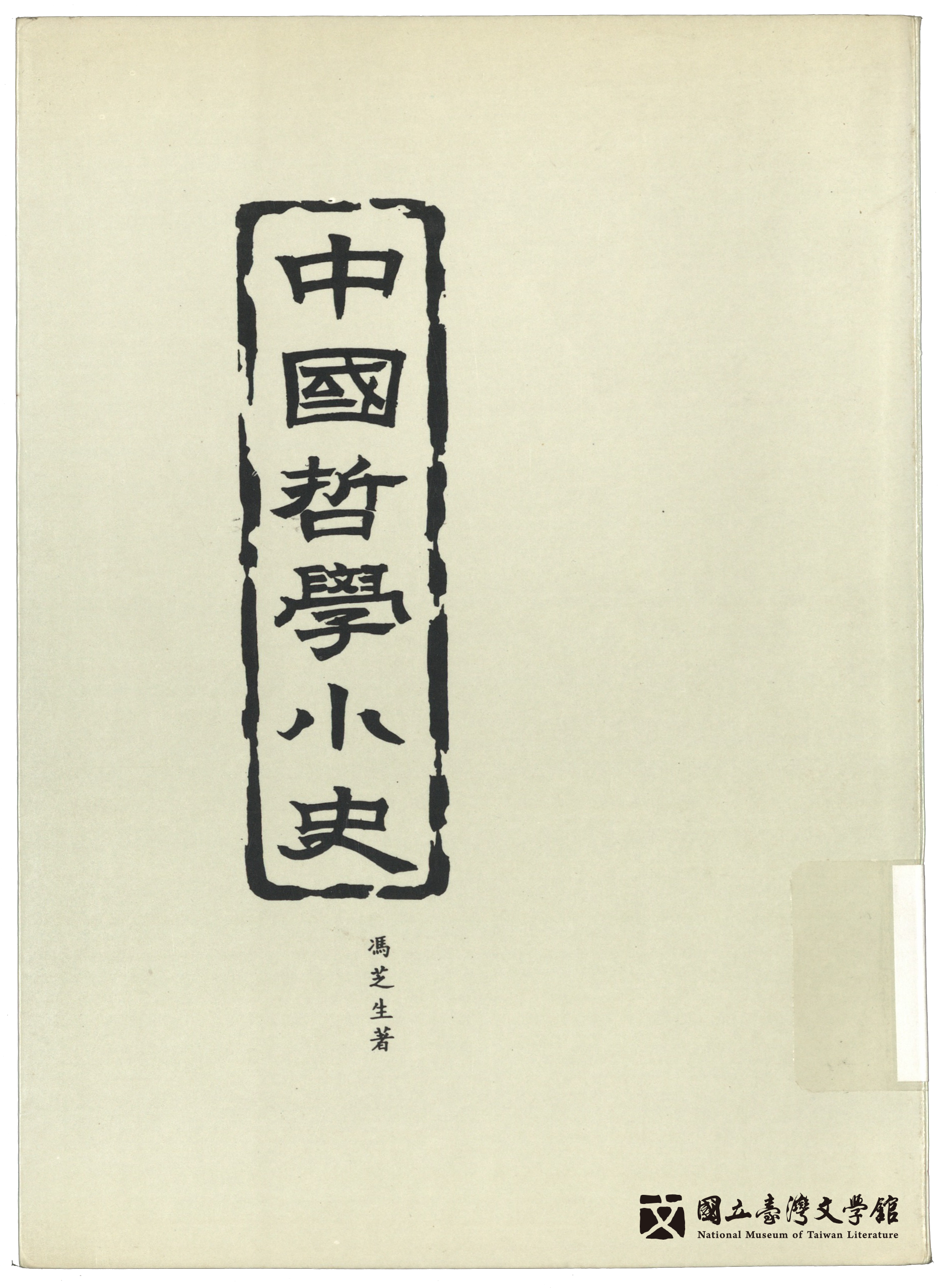
◰ Feng Zhi-sheng's A HISTORY OF CHINESE PHILOSOPHY
Author Feng You-lan's works were banned by the Nationalist government because of his support for the Chinese Communist Party. Zhi-sheng was the courtesy name of Feng You-lan. The publisher published the book using this name to avoid inspection. (From the collection of the library at the National Museum of Taiwan Literature)
 。
。 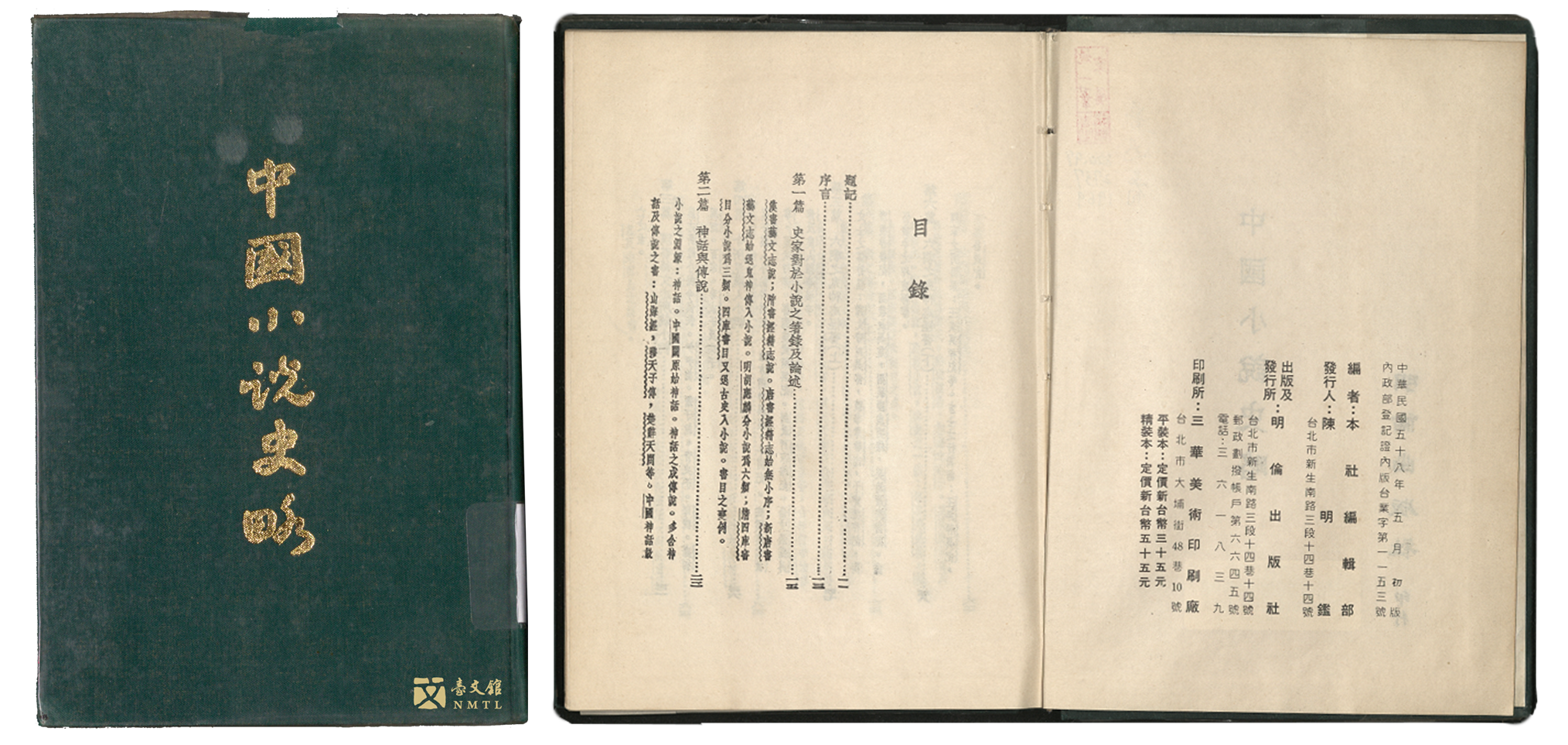
◰ Lu Xun's A BRIEF HISTORY OF CHINESE FICTION
An important book on the history of Chinese fiction by Lu Xun Since Lu Xun long criticized the Nationalist government and his views were left-wing; his works were immediately banned after martial law was introduced.(From the collection of the library at the National Museum of Taiwan Literature)
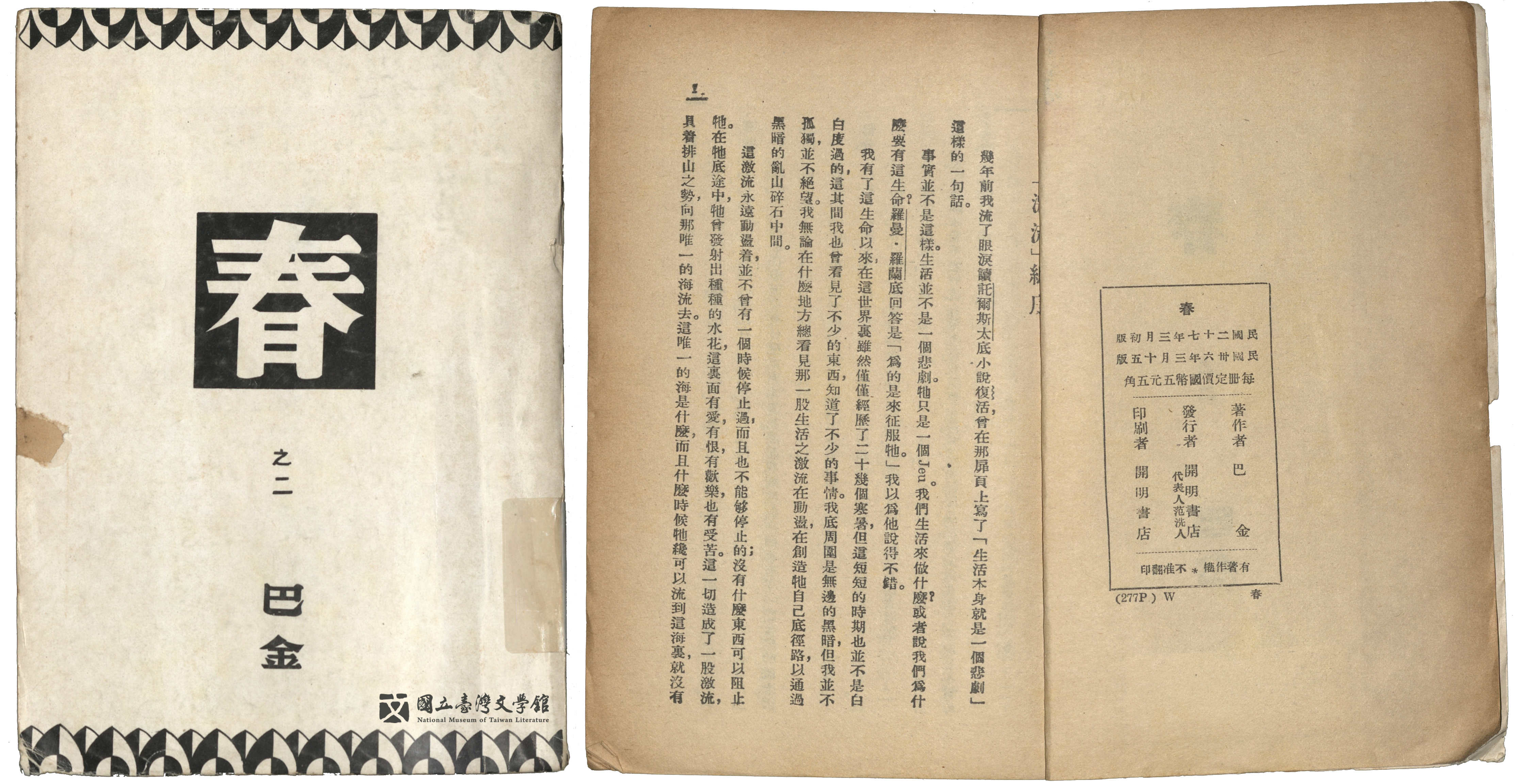
◰ Ba Jin's SPRING
The second book of Chinese left-wing writer Ba Jin's representative work "The Torrents Trilogy." It shows the outdated customs of the feudal society as well as young people's strong will to break through the torrents of their time. Ba Jin was a leader among the left-wing writers that supported the Chinese Communist Party. All of his works were banned. (From the collection of the library at the National Museum of Taiwan Literature)
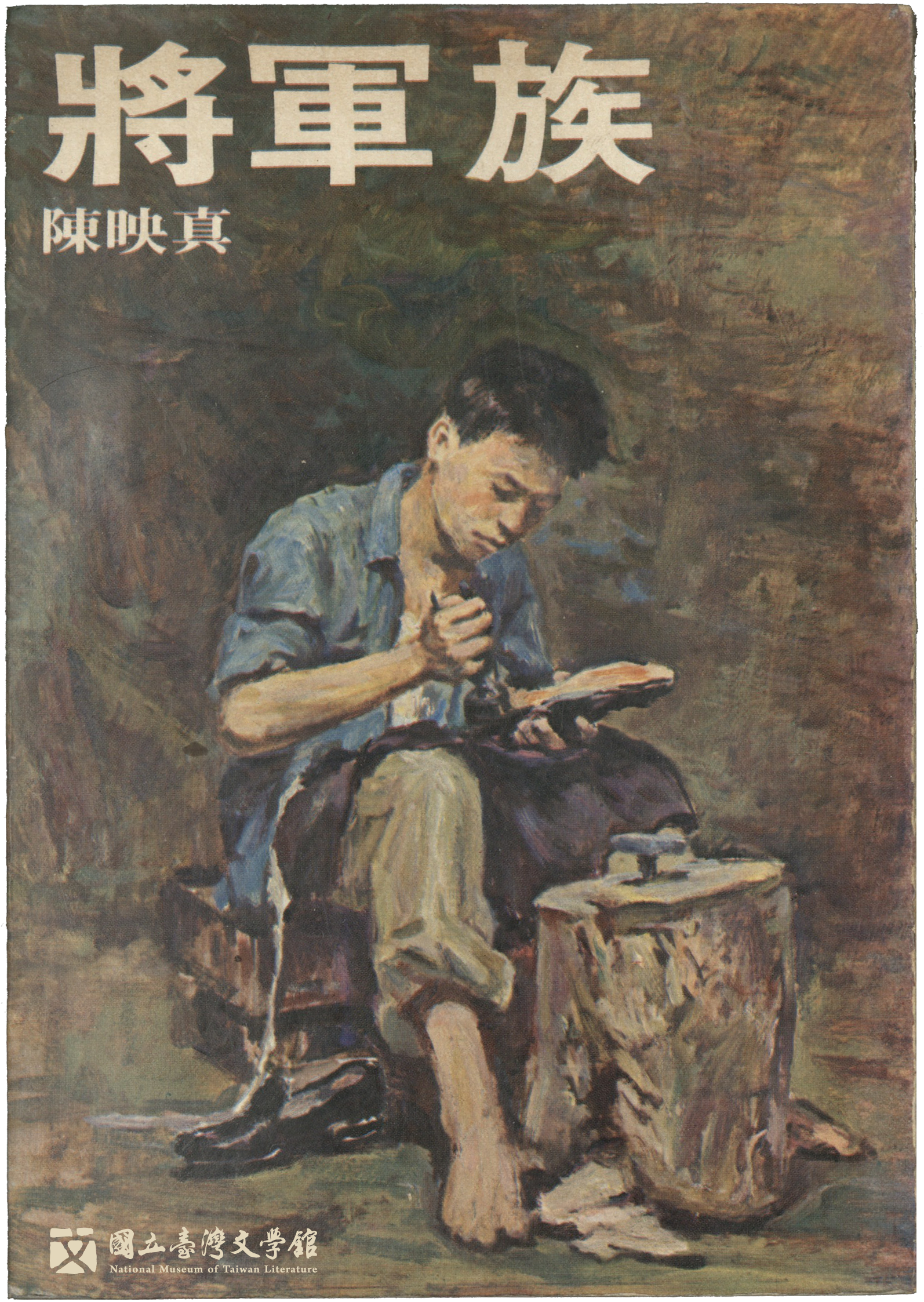
◰ Chen Ying-chen's A RACE OF GENERALS
Chen Ying-chen's first novel collection was published in 1975. The novel of the same name describes a red flag flying in the air, which was seen as an indication of "red" China. The Taiwan Garrison Command banned the book for "inappropriateness." (Kept in National Museum of Taiwan Literature)
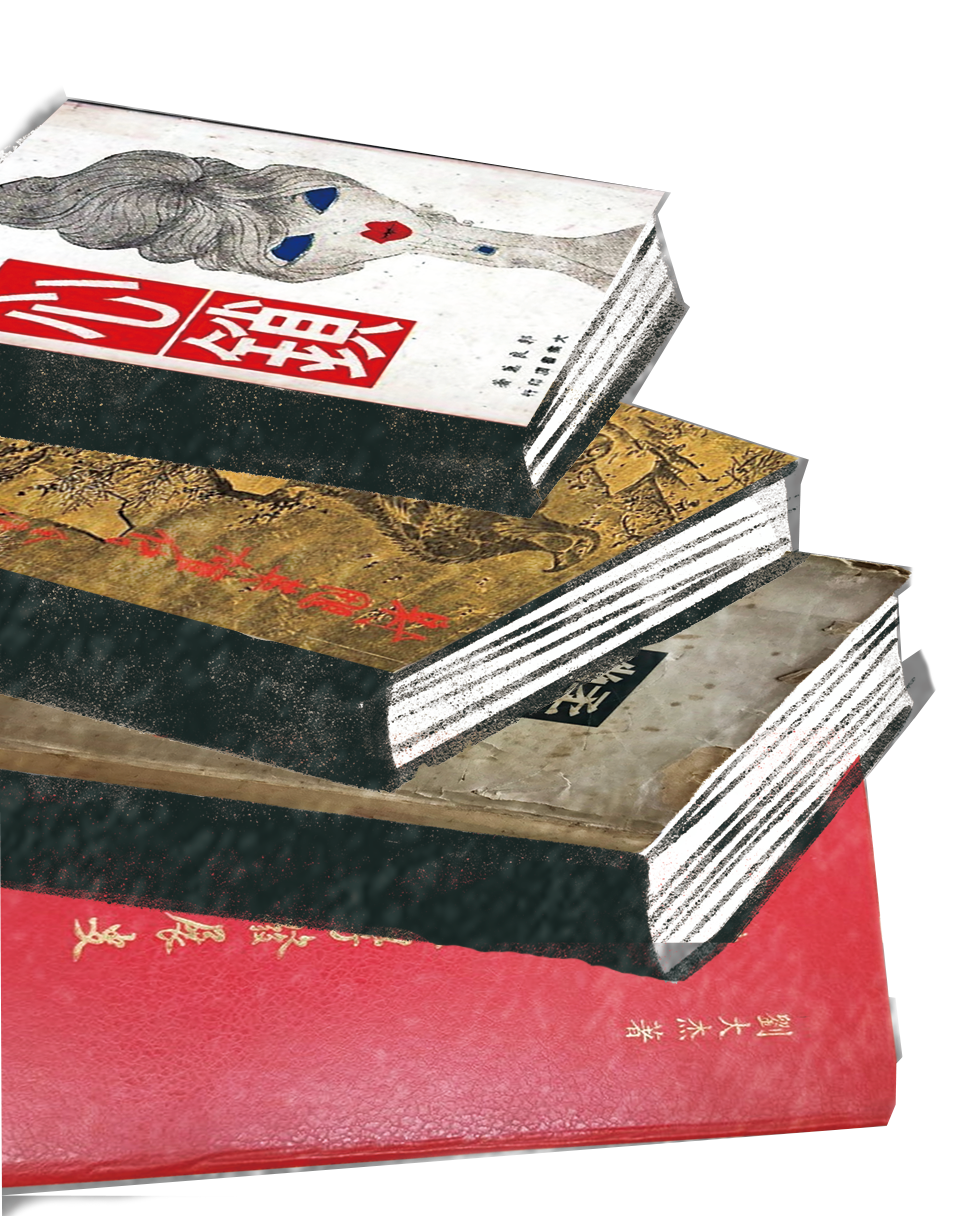 Nothing "Yellow": Prohibition on Anything Erotic
Nothing "Yellow": Prohibition on Anything Erotic
Books related to sex were often labeled "yellow." They were also victims of censorship.
HEART LOCK by Kuo Liang-hui was the most iconic example. The "bold sex scenes" and "sexual relationships violating ethics" in this book led to a public outcry. Women's Writing Association revoked Kuo's membership and reported Kuo to the Ministry of the Interior. The Government Information Office banned HEART LOCK in 1963 for "indecency." Chinese Writers' & Artists' Association later on also revoked Kuo's membership because of the book being too "indecent."
THE SPRING OF LAN CAIXIA by Li Chiao tells the poignant story of a child prostitute. Yet, it was banned for indecency. Meanwhile, even foreign literary classics were censored. Lady Chatterley's Lover by D. H. Lawrence and Jun'ichirō Tanizaki's THE KEY both describe human nature and desire. However, they were seen by the government as books that would corrupt society. Alfred Kinsey's books on human sexual behavior and the book on relationships—HOW TO GET A GIRLFRIEND—were also included on the list of book bans.
In the 1990s, after martial law was lifted, books were still censored on the basis of decency. Chen Xue's BOOK OF WICKED WOMEN, which illustrates lesbian desire, was required to be sealed in plastic and labeled with the age restriction of 18, leading to controversies. Yet, this somehow became an unexpected advertisement for the book.
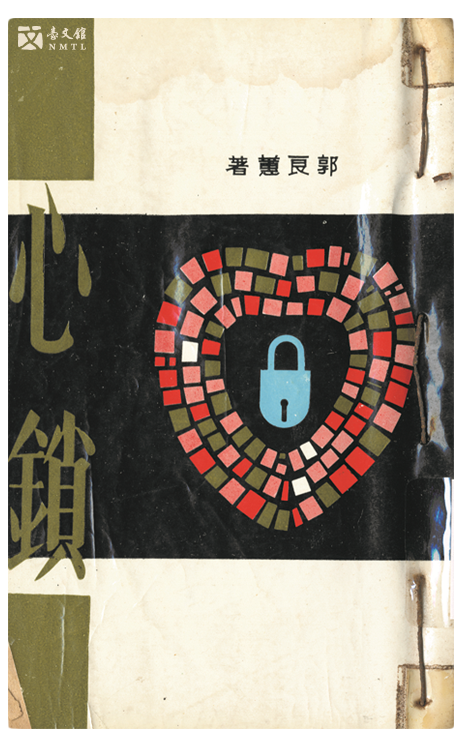
◰ HEART LOCK
The book involves extramarital affairs and incest. After the book was published in 1962, it was banned right away. The author, Kuo Liang-hui, was criticized by the Chinese Writers' & Artists' Association; later on, her membership was revoked. When it was published again in 1986, it was still banned. Only until 1988 was the ban lifted.(Kept in National Museum of Taiwan Literature)
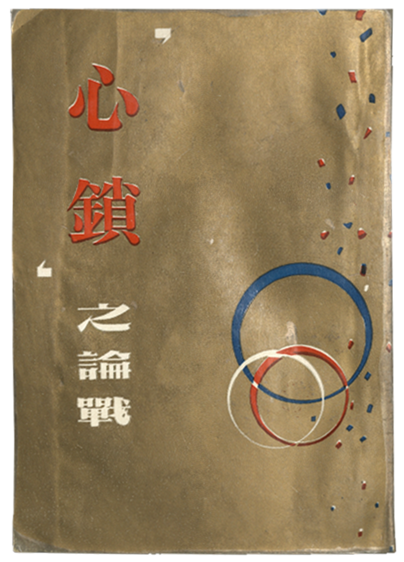
◰ DEBATE ON HEART LOCK, compiled by Yu Zhi-liang
The banning of HEART LOCK caused a stir in the literary scene. Many writers wrote to discuss whether HEART LOCK was really a corrupting novel; they also wrote about the rules for banning books. Writer Yu Zhi-liang compiled all these articles into DEBATE ON HEART LOCK, which became first-hand information of the incident.(Kept in National Museum of Taiwan Literature)
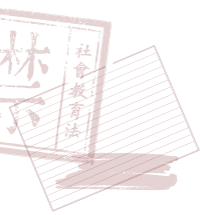
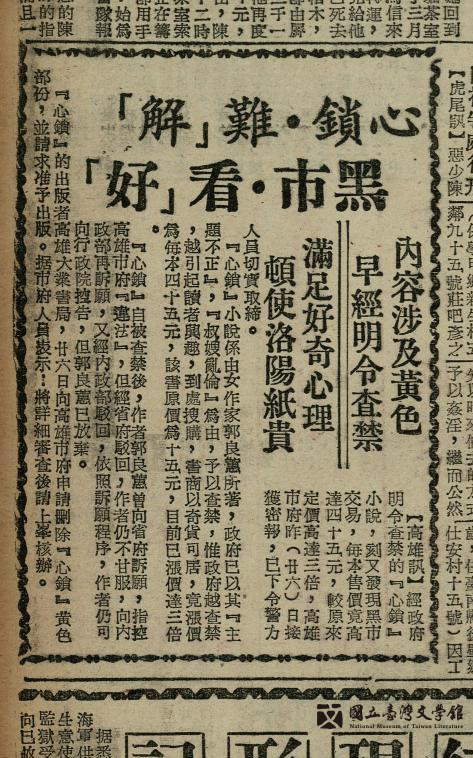
◰ "Price of Banned Heart Lock 'Soars' in Black Market" TAIWAN MINSHENG DAILY, March 27, 1966
This article reveals the literary scene at the time and how the censorship system worked. With the help of public opinion and official prohibition, the book price of HEART LOCK soared.(Authorized by the Digital Archives Service, National Library of Public Information)
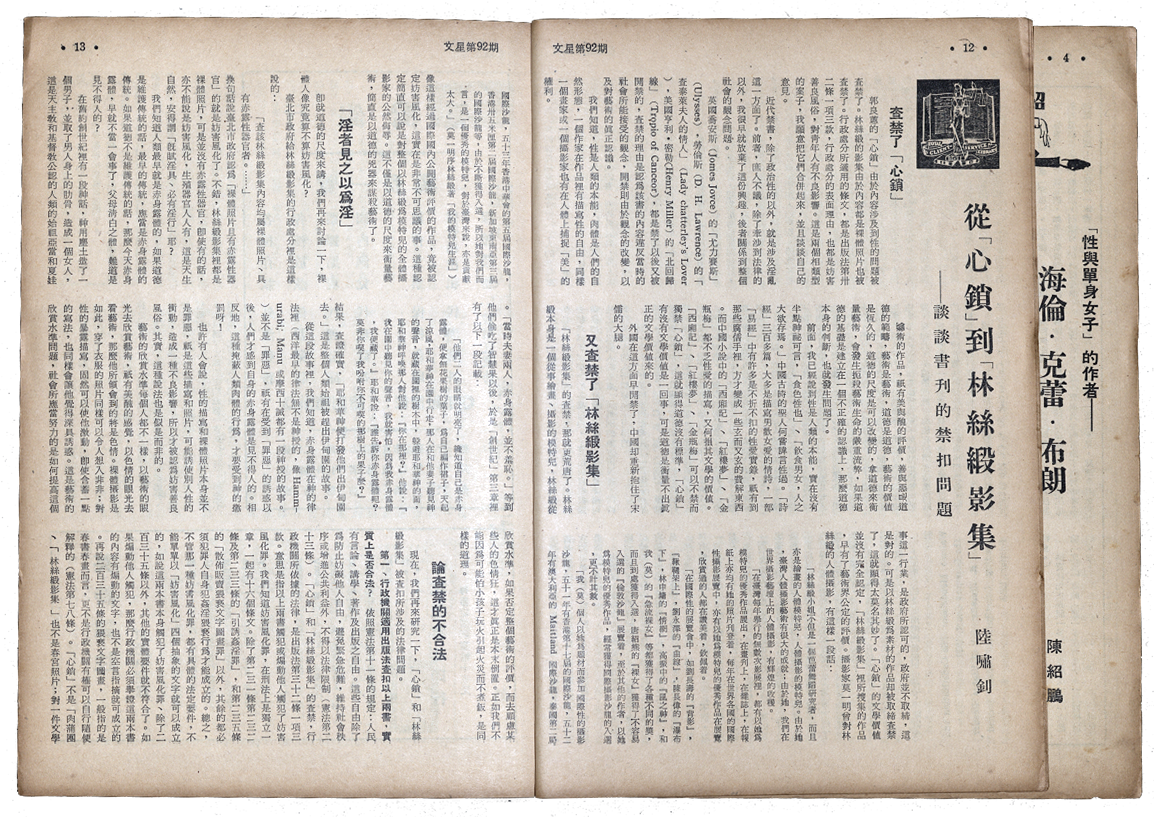
◰ "From 'Heart Lock' to 'Photos of Lin Si-duan—About Book Banning" Issue 92, APOLLO MAGAZINE
APOLLO MAGAZINE was an iconic and controversial publication in Taiwan. This issue discusses books such as HEART LOCK and SNOWSTORM and the appropriateness of the book banning policy by reviewing cases of the Anglo-American law system while putting forward critical viewpoints.(From the collection of the library at the National Museum of Taiwan Literature)
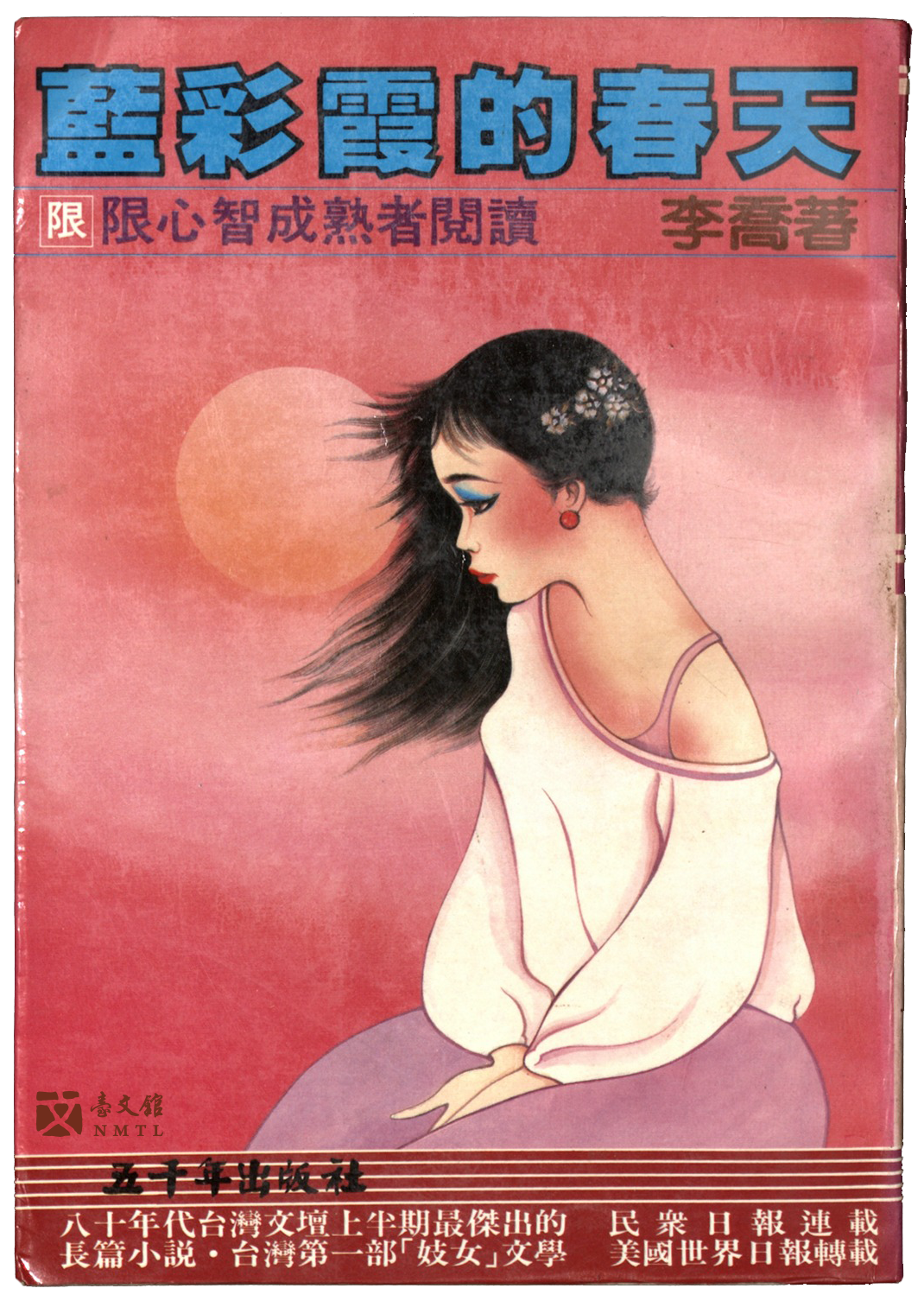
◰ THE SPRING OF LAN CAIXIA
This long novel by Li Chiao tells the tale of a female protagonist, Lan Caixia, who becomes a child prostitute; the book illustrates the process of how Lan first accepts her fate and then decides to fight against it. It was published in instalments in 1985 in the newspaper supplement. After the instalments were put together and published, the book was banned for "indecency."(Kept in National Museum of Taiwan Literature)
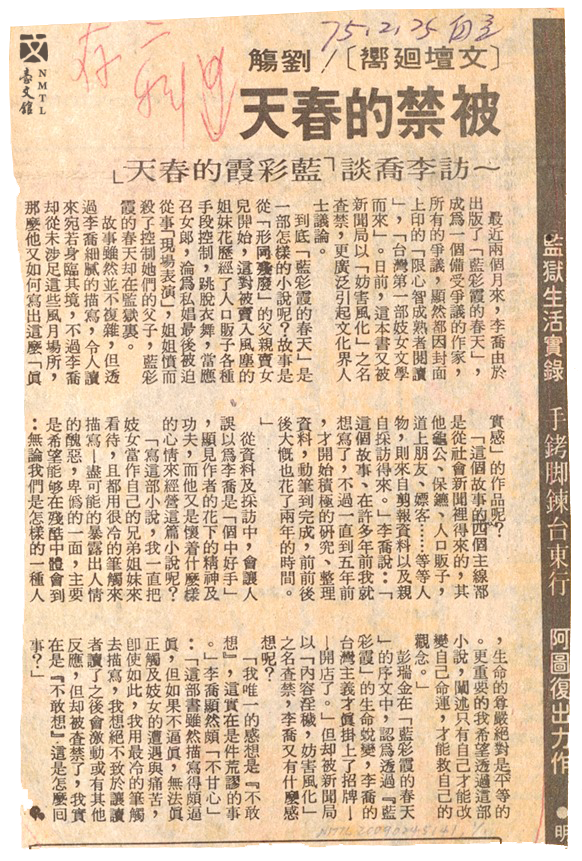
◰ "A Banned Spring—Interviewing Li Chiao about THE SPRING OF LAN CAIXIA"
A newspaper interview after Li Chiao's THE SPRING OF LAN CAIXIA was banned. Li considered this book as revealing the predicament faced by sex workers and hoped that everyone could control their own fate. This article demonstrates the discord between restriction on speech and freedom of creation.(Kept in National Museum of Taiwan Literature)
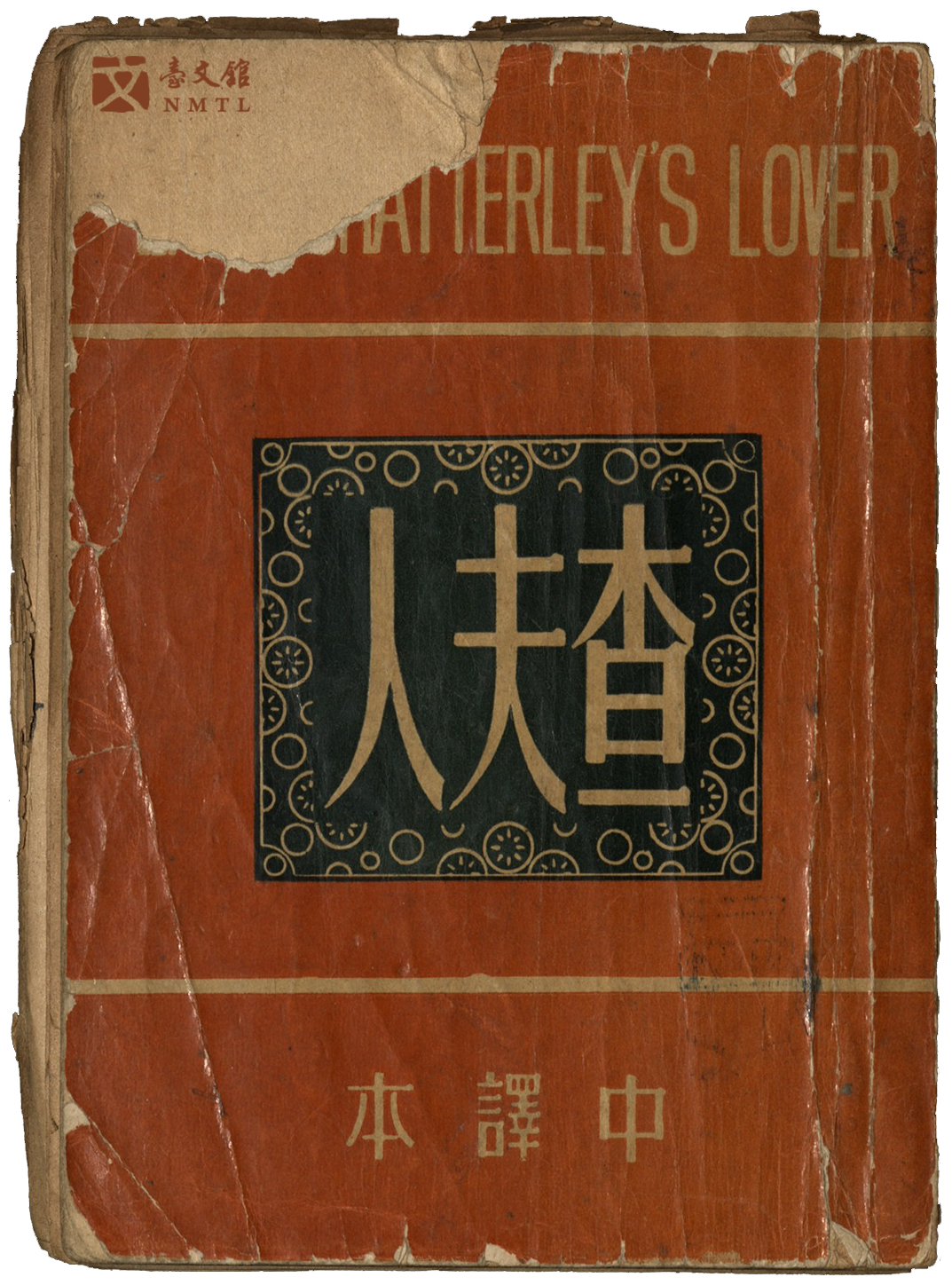

◰ MS. CHATTERLEY
The original book title was D. H. Lawrence's LADY CHETTERLEY'S LOVER. The bold sexual descriptions and illustration of extramarital affairs made it a banned book then. To avoid censorship, the publisher shortened the title to MS. CHATTERLEY; however, it was still banned.(Kept in National Museum of Taiwan Literature)
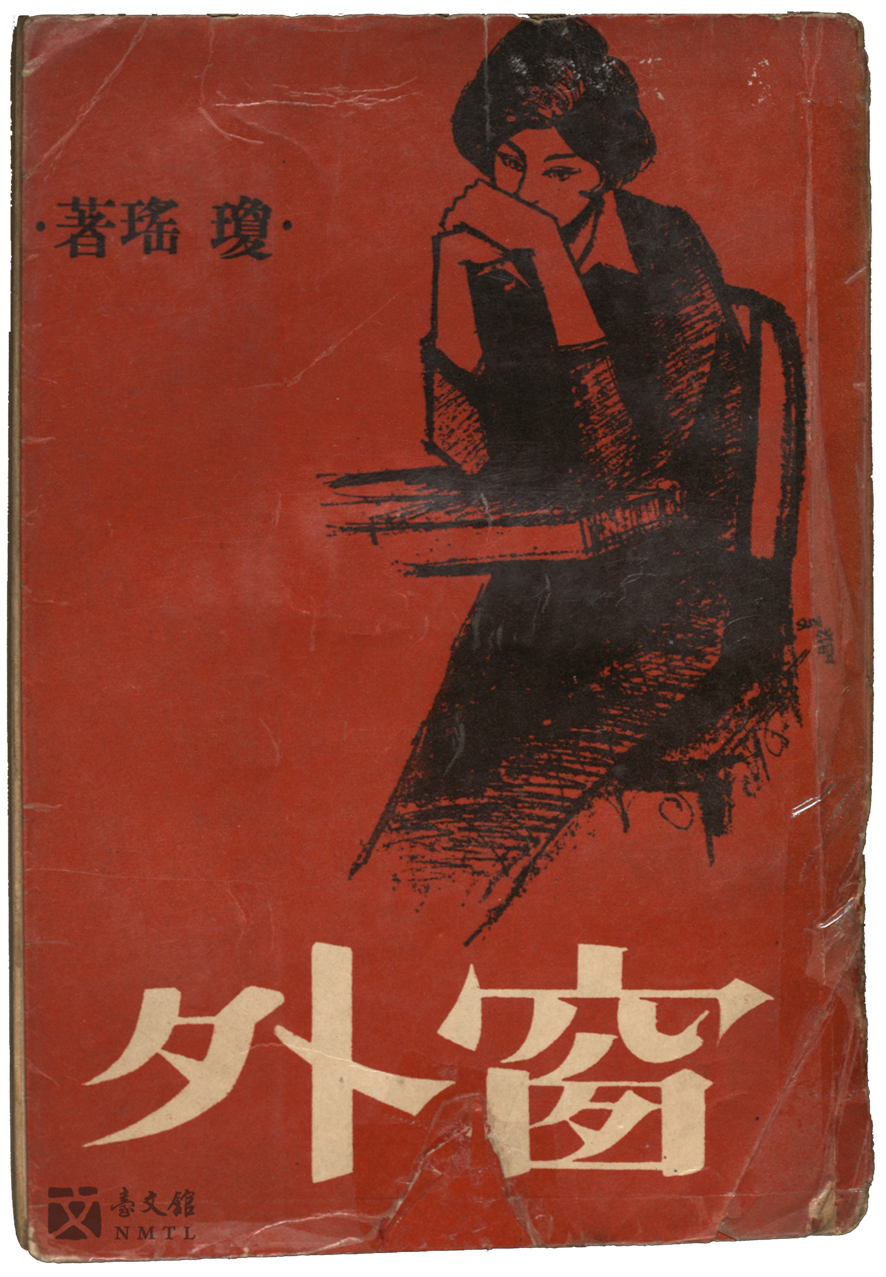
◰ Chiung Yao's OUTSIDE THE WINDOW
This book involves a teacher-student relationship and extramarital affair. After the work was published in 1963, it stirred controversy. Meanwhile, it was banned because it was inconsistent with the anti-Communism literature the government promoted. In 1966, the book was made into a film.(Authorized by Ying Fenghuang)
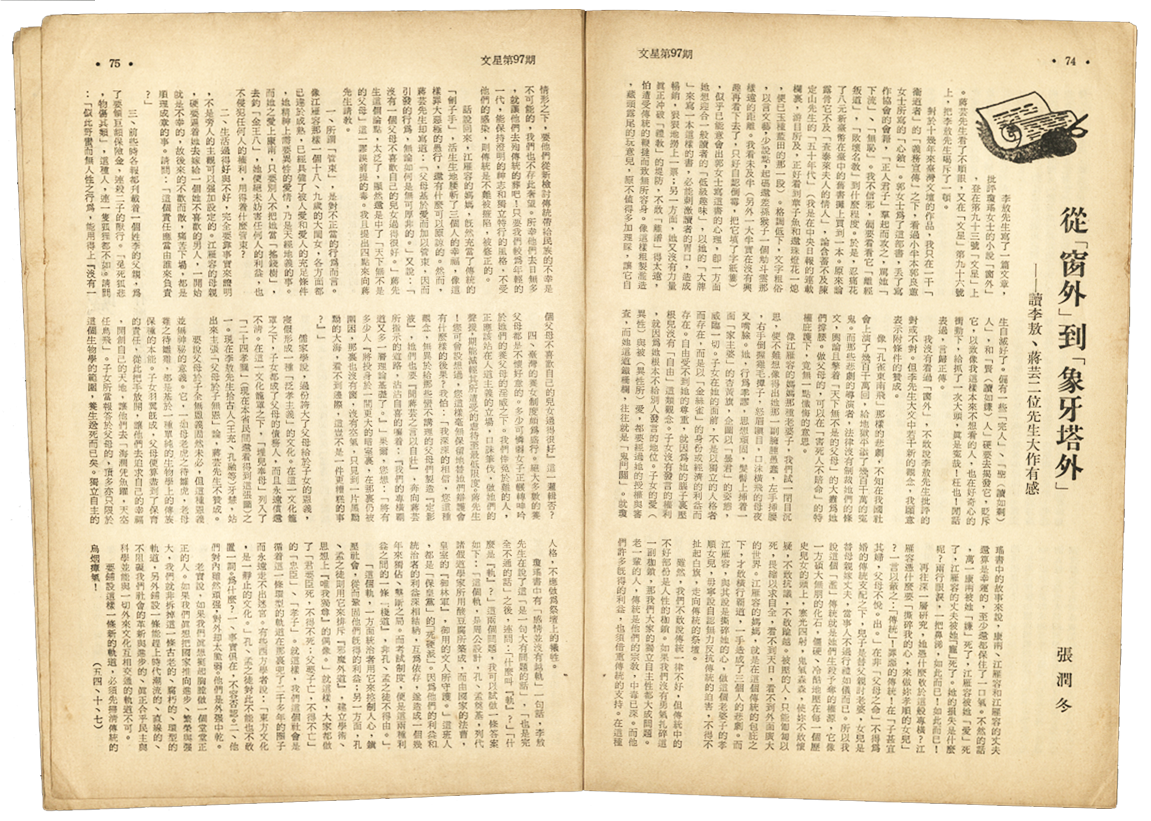
◰ "From OUTSIDE THE WINDOW to OUTSIDE THE IVORY TOWER—Thoughts on Reading Works by Li Ao and Jiang Yun." Issue 97 of APOLLO MAGAZINE
From Kuo Liang-hui's HEART LOCK to Chiung Yao's OUTSIDE THE WINDOW, writings about sex and taboos sparked a discussion. The article also examines the challenges faced by traditional values. This magazine was banned because of containing a review written by Li Ao.(From the collection of the library at the National Museum of Taiwan Literature)
Nothing "Black": Prohibition on Political and Party Scandal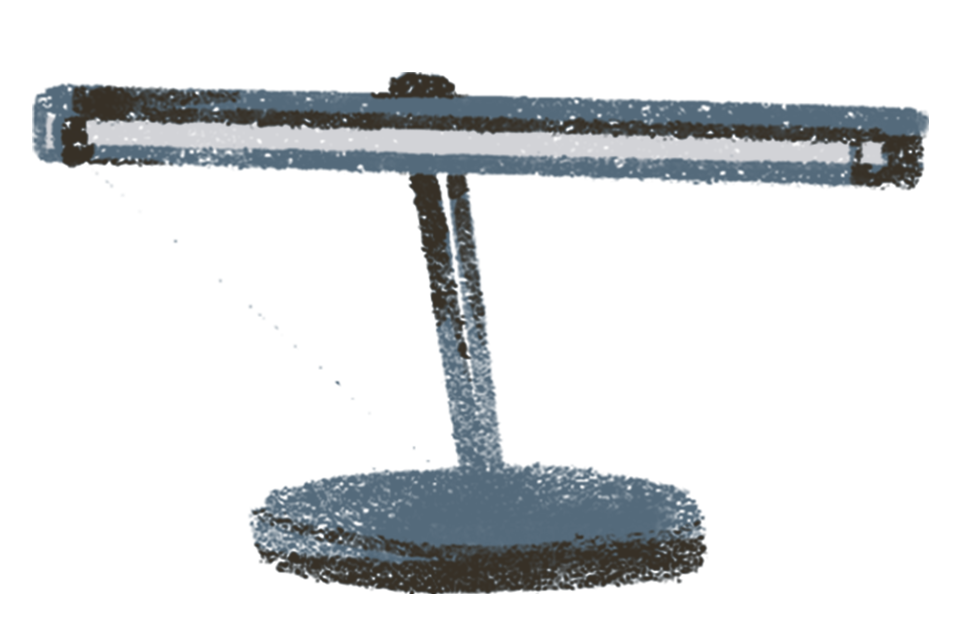
Apart from "red" and "yellow," the Cultural Cleansing Movement also raided a number of publications that reported inside stories of politics and uncovered secrets of the regime, including CHINA NEWS, NEWS, etc. The government feared that these inside stories might have a negative impact on society.
In the 1970s, publications that uncovered inside stories of the political world and provided platforms for the voices of Tangwai (KMT opponents) emerged again. Differing from the "black" publications in the 1950s, these emerging publications became a breakthrough point for the "Tangwai movement" (political movement against the authority) or the fight for freedom of speech; though constantly being banned, they were extremely popular among the general public, leading to a unique phenomenon where books became more popular when they were banned.
Book banning failed to block harmful content; instead, it became an unexpected advertisement for books. "Banning A Book is The Best Advertising!" As society became more democratic and liberal, people were eager to exercise their right to access information. The strict control over speech became unjustifiable.
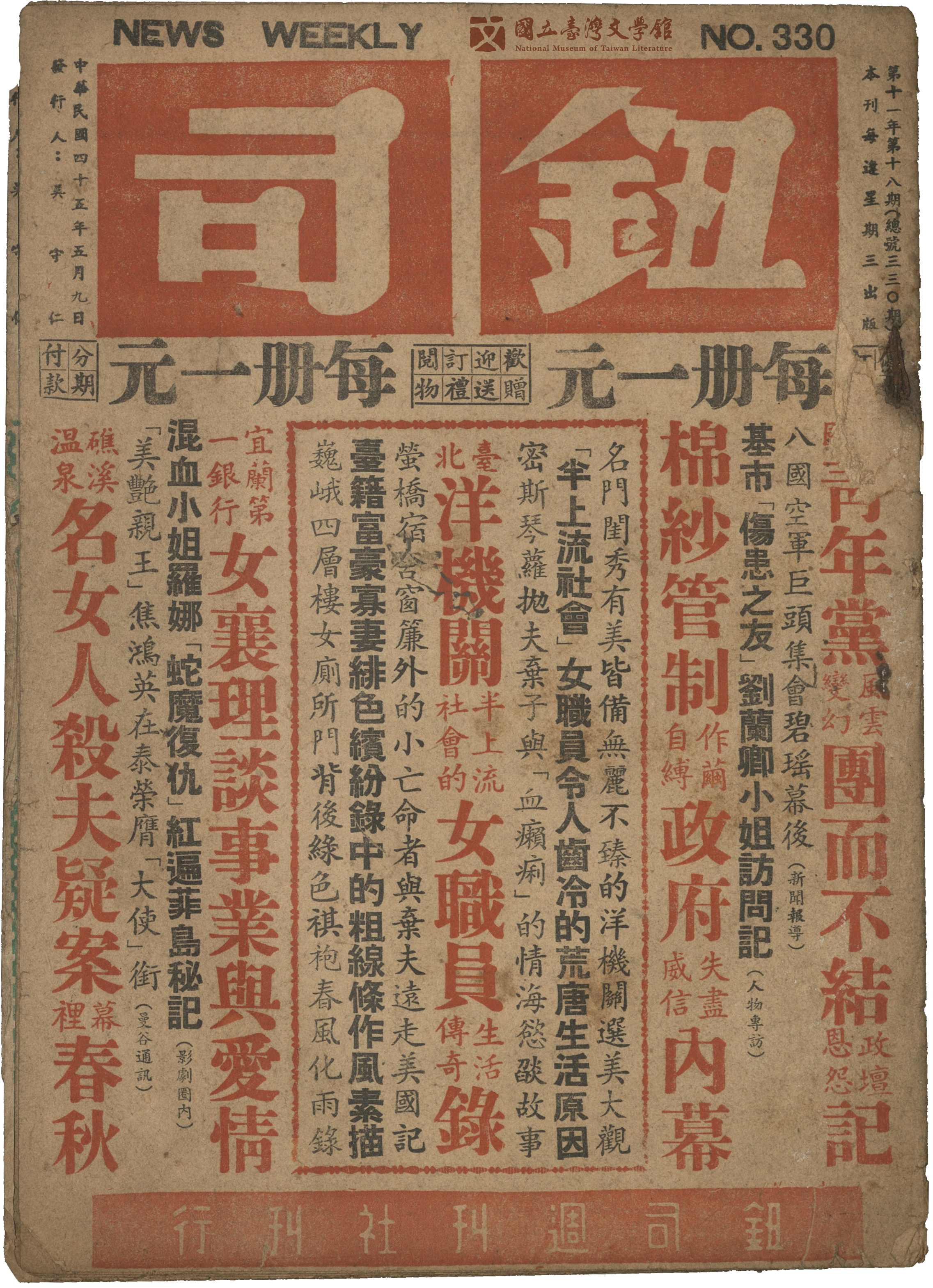
◰ Issue No. 1, NIU SI
Founded in 1952, the publication mainly disclosed political scandals and romantic relationships, which made it different from the anti-communism literature promoted by the government. In the "Cultural Sanitation Campaign," it was accused of promoting criminality and was subsequently suspended.(Authorized by Ying Fenghuang)
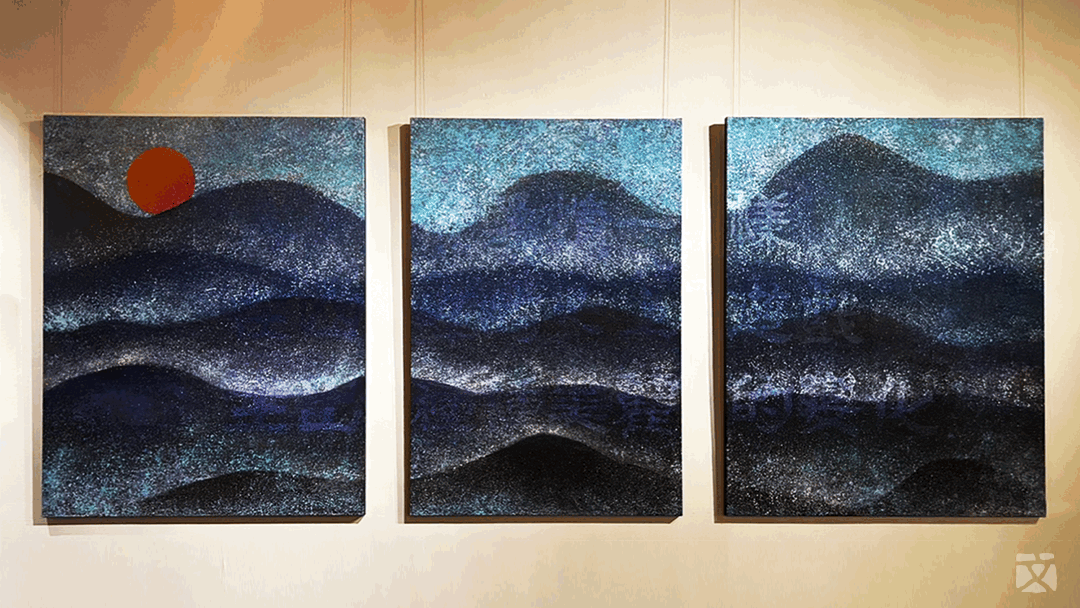
◰ MIST/ Shen Chang-ming/2023
The mist,
like love, plays upon the heart of the hills and brings out surprises of beauty.STRAY BIRDS by Rabindranath Tagore; translated by Zheng Zhen-duo.
The exhibition invites artist Shen Chang-Ming to combine Tagore's poems with contemporary quantum art. Shen uses a unique method to create different textures on the canvas. The suffused fine sand particles, the engraved clerical script on the bottom, and the words that appear and then disappear when viewers move their feet to make light refract—all resonate with the literary works hidden in the past.
STRAY BIRDS is a collection of poems by English Indian poet Tagore. However, since the translator Zheng Zhen-duo was deemed a communist sympathizer by the Nationalist government, the book was banned. There was another edition on the market in the 1950s, translated by Mi Wen-kai; this edition was not banned. The modern film DETENTION shows a book club member getting into trouble due to reading Tagore's poems. Yet, the poems themselves are not in violation of any taboo; the member is in trouble because of reading the translation by Zheng Zhen-duo. While watching the film, viewers should realize where the taboo truly lies, so they don't blame the wrong person, like the enforcer of book banning.
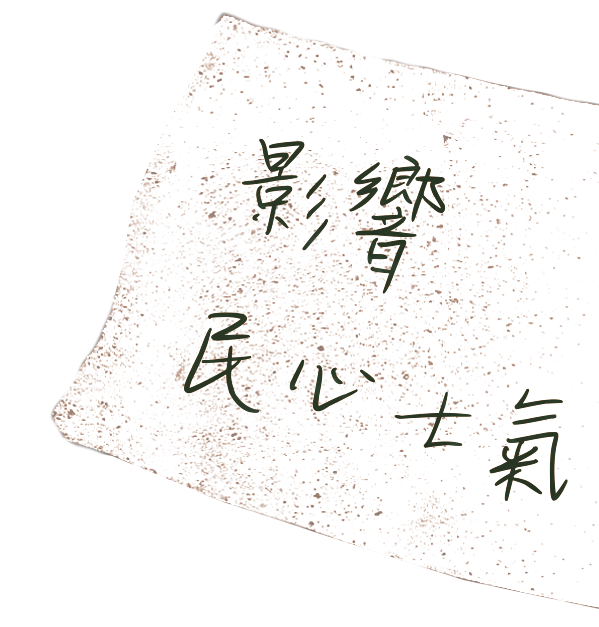
"Fun Facts"
The Suppression of "Being Taiwanese"
Either during the Japanese colonial period or the martial law period after WWII, the authority rigorously reviewed writings criticizing policies, defaming the head of state, or inciting resistance.
In the 1950s after WWII, the policy of promoting anti-Communist literature dominated the literary scene. Taiwan's own nativist writings were somehow suppressed and marginalized. Books that were published abroad, such as Su Beng's MODERN HISTORY OF TAIWANESE IN 400 YEARS, which was finished in the early years of the 1960s, and Wang Yu-te's TAIWAN: A HISTORY OF AGONIES, were also forbidden in Taiwan.
It was only after 1964 that a few publications of Taiwan's nativist literature appeared, such as TAIWAN LITERARY, founded by Wu Cho-liu. Nevertheless, Wu's TAIWAN GOLDEN-BELL and THE FIG TREE: MEMOIRS OF A TAIWANESE PATRIOT were still banned. After the 1980s, with the progress of the democratization movement, publications such as TAIWAN NEW CULTURE, which was coordinated by Lin Wen-chin and Sung Tse-lai, started to appear. More issues regarding "Taiwan" were being discussed, including promoting Taiwan's own nationalism and the textualization of Taiwanese. These publications were banned several times by the government. Yet, with martial law being lifted and society becoming more liberated, the concept of "Taiwan" gradually came to be unsuppressed.
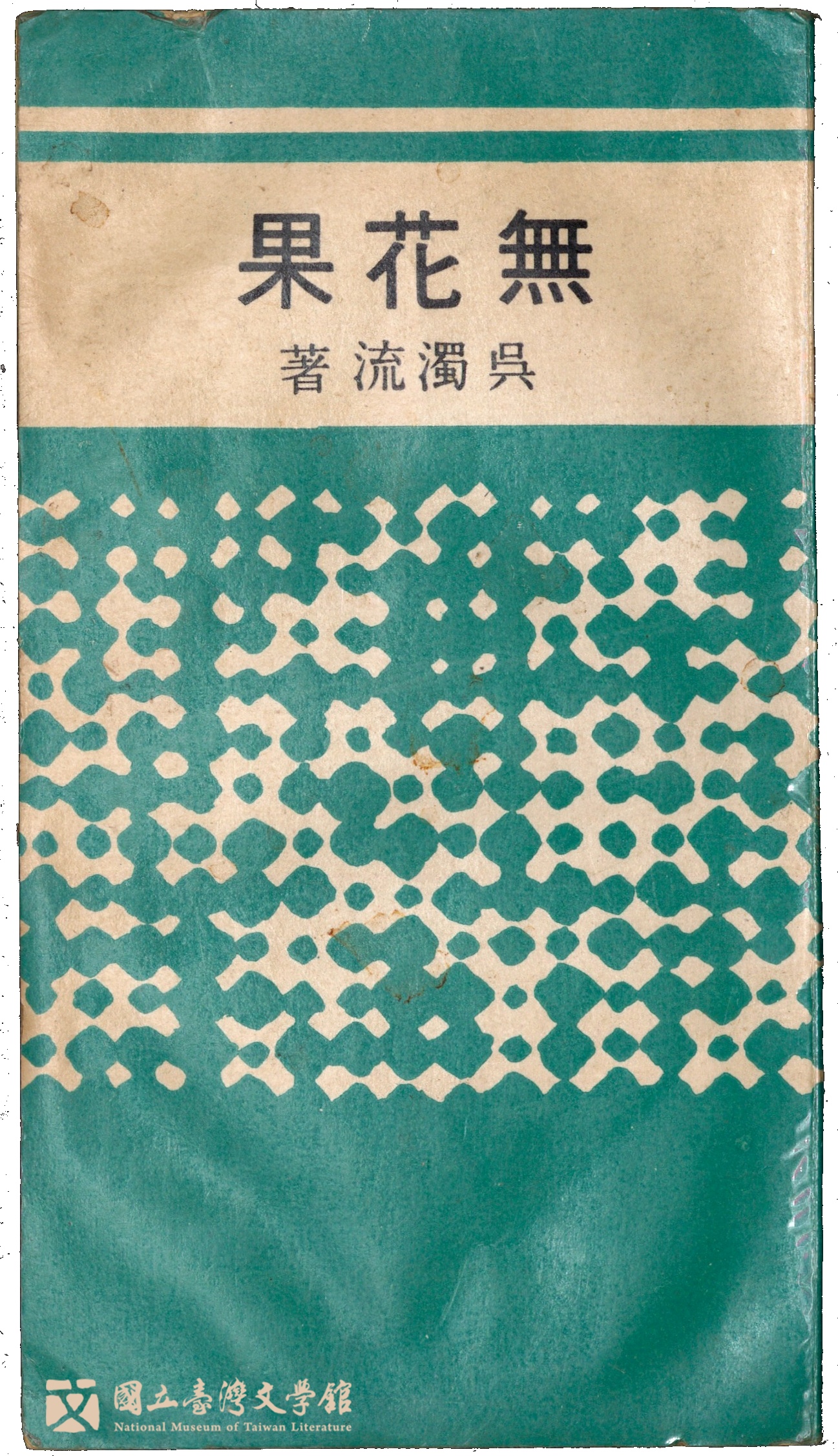
◰ Wu Cho-liu's THE FIG TREE: MEMOIRS OF A TAIWANESE PATRIOT
Wu Cho-liu's semi-autobiography involves the February 28th incident. It was banned by the Nationalist government for damaging the government's image. Only until the late 1980s was its publication allowed in Taiwan.(Kept in National Museum of Taiwan Literature)
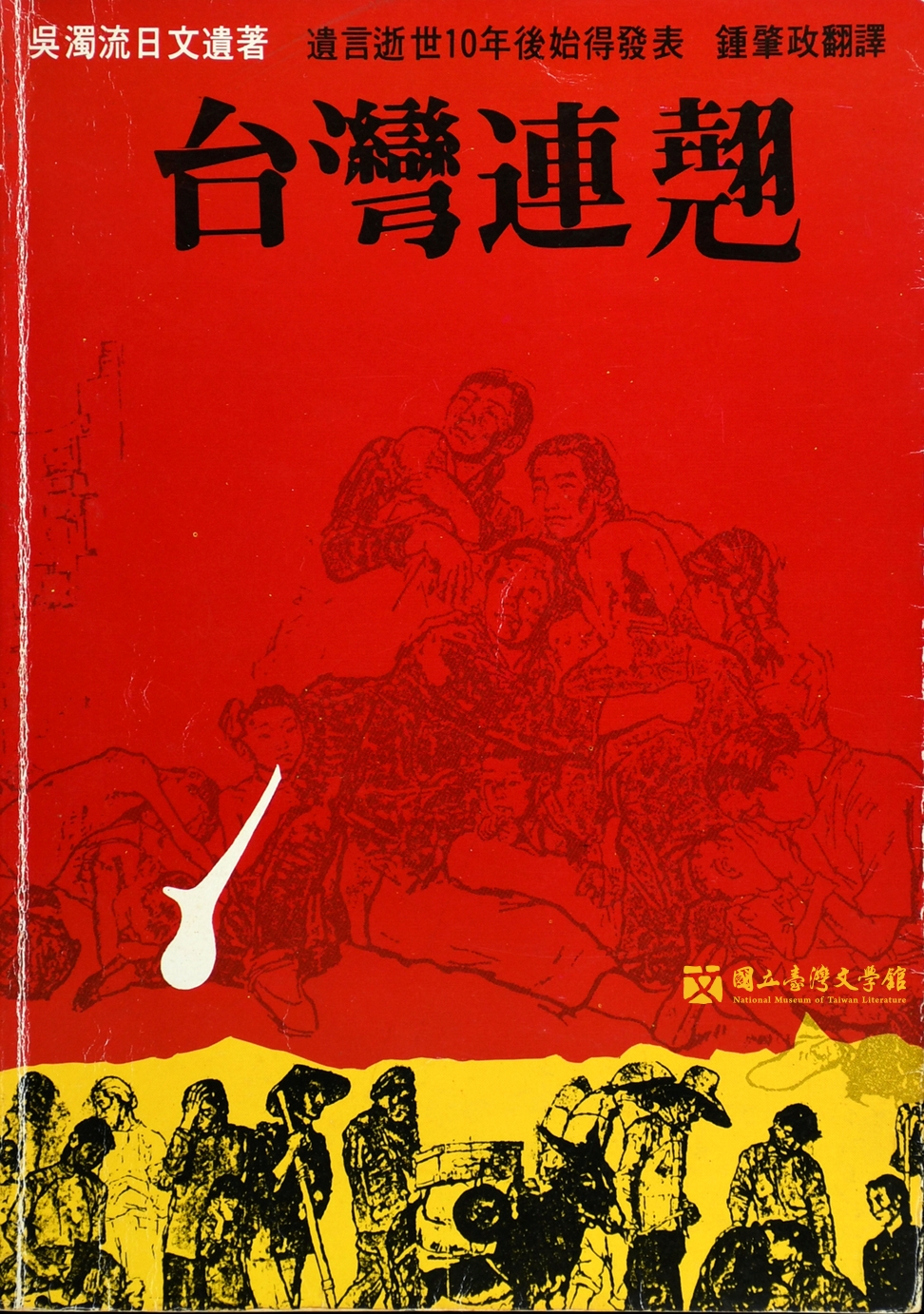
◰ Wu Cho-liu's TAIWAN GOLDEN-BELL
Wu Cho-liu's semi-autobiography written in Japanese. The work involves the February 28th incident and many sensitive political incidents. After the manuscript was finished, Wu Cho-liu did not publish it immediately. Only until several years after he passed away did Chung Chao-cheng translate the remaining chapters and publish it.(Kept in National Museum of Taiwan Literature)
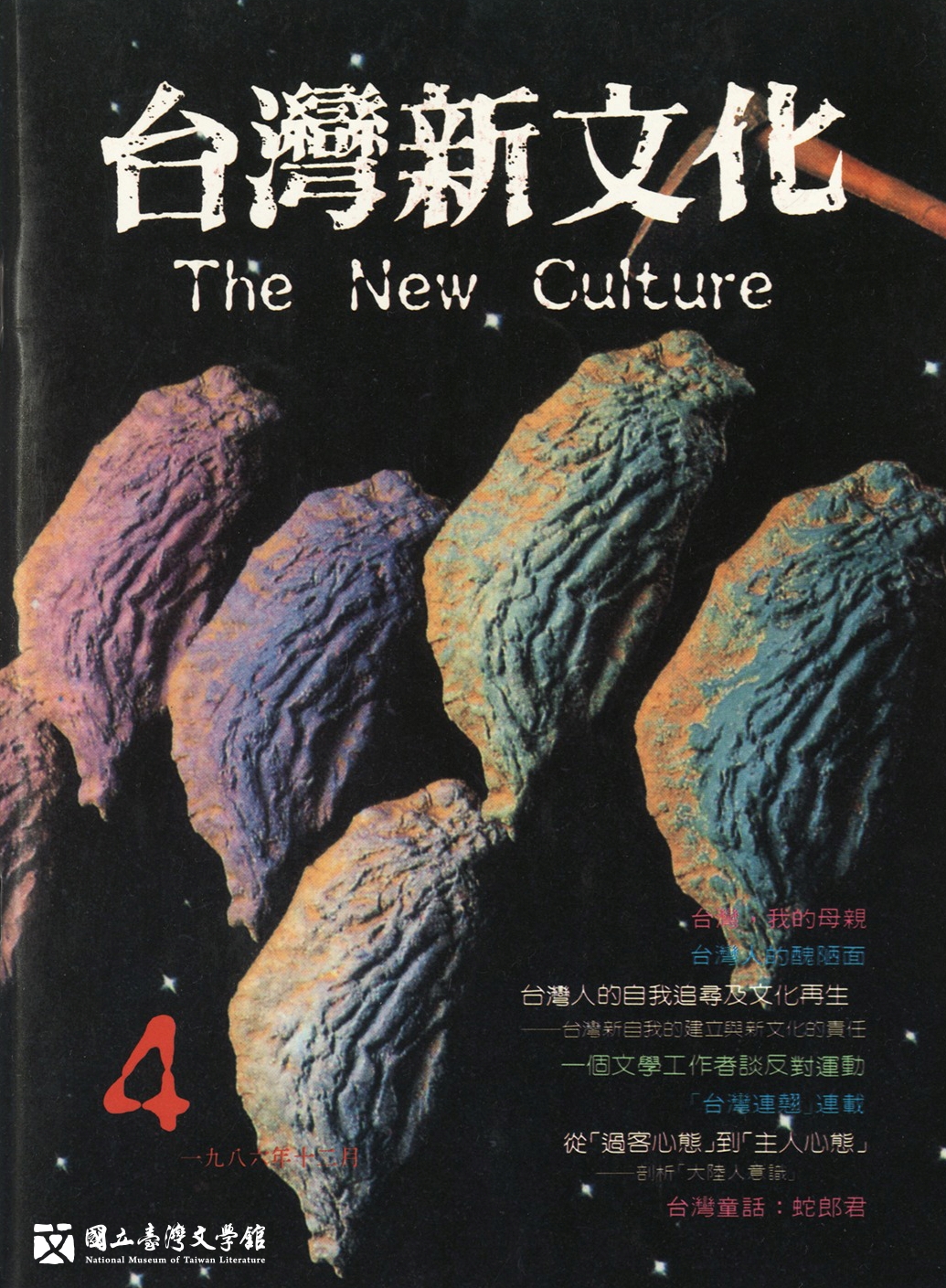
◰ Issue 4 of TAIWAN NEW CULTURE, December 1986
This magazine mainly promoted Taiwan's own nationalism and the textualization of Taiwanese. It was a platform for highly sensitive literary writings, including Wu Cho-liu's TAIWAN GOLDEN-BELL, which was banned by the government.(Kept in National Museum of Taiwan Literature)
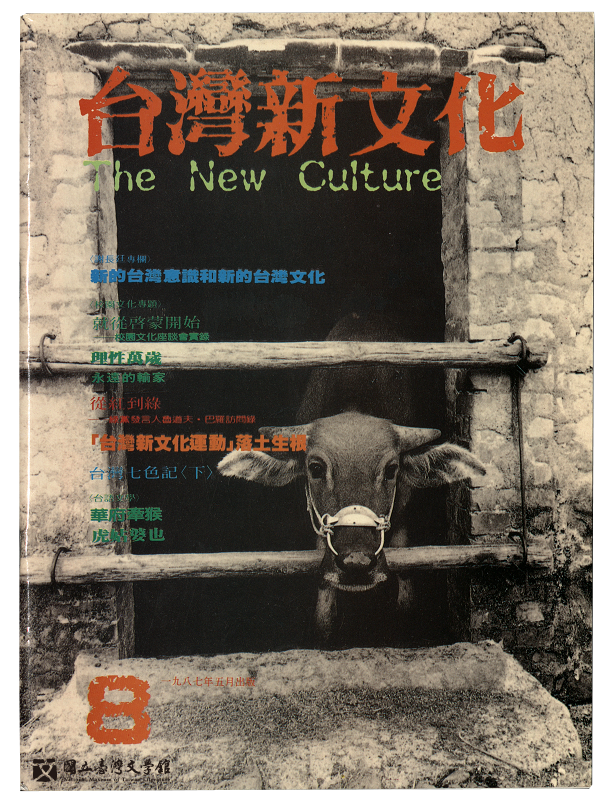
◰ Issue 8 of TAIWAN NEW CULTURE, May 1987
This issue contains the key contents of the first eight issues. Only the second and the seven issues were not banned. The banned contents mainly involve the fight for Taiwan Nationalism, promotion of Taiwanese, and the February 28th incident.(Kept in National Museum of Taiwan Literature)
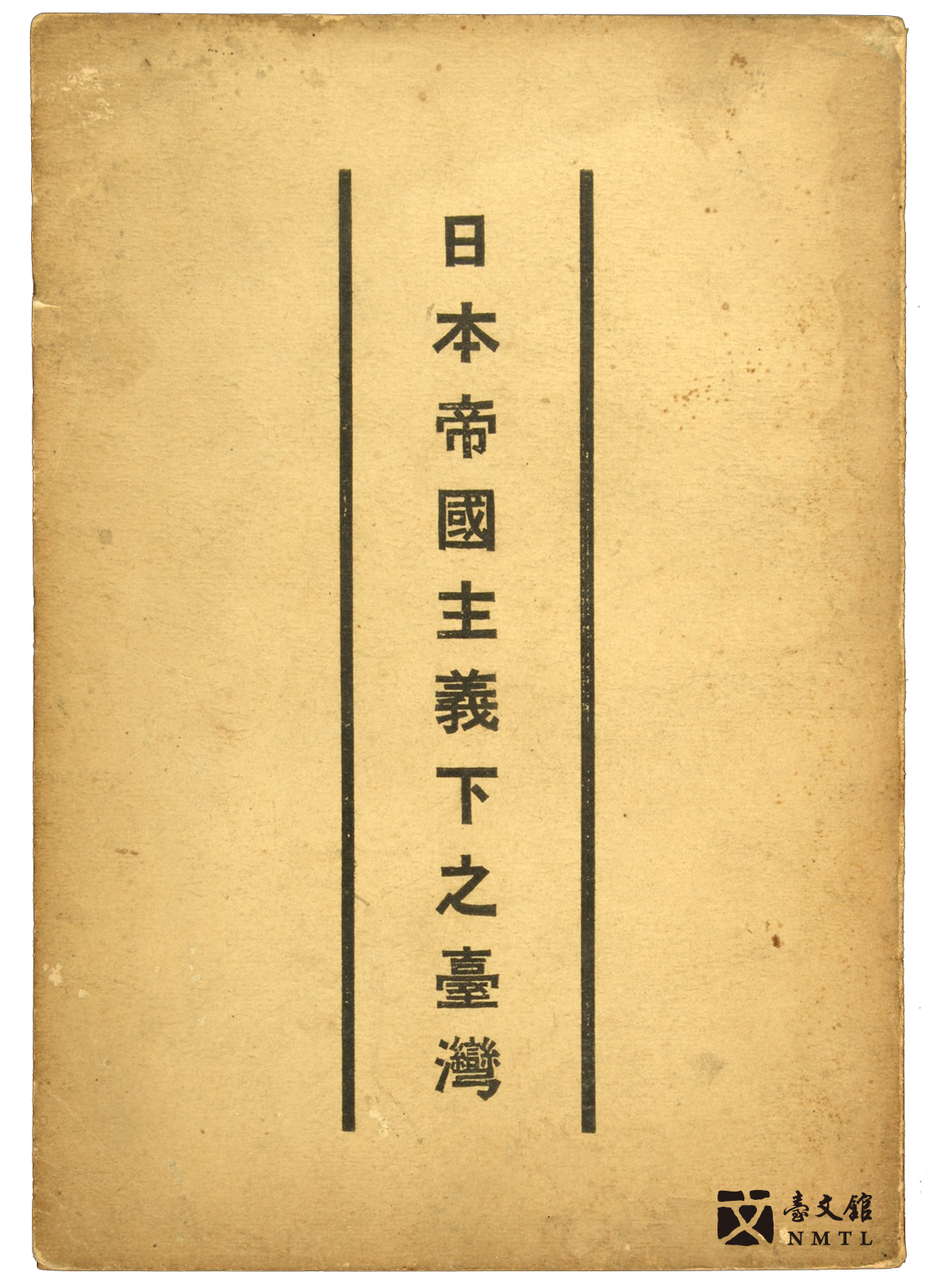
◰ TAIWAN UNDER JAPANESE MILITARISM
The work was written by Tadao Yanaihara. Its criticism of the Japanese colonial policy in Taiwan caused it to be banned by Government-General of Taiwan after it was published in 1929. It could only be sold in Japan and was prohibited from circulating in Taiwan. It was republished by the Historical Research Committee of Taiwan Province in 1952.(Kept in National Museum of Taiwan Literature)
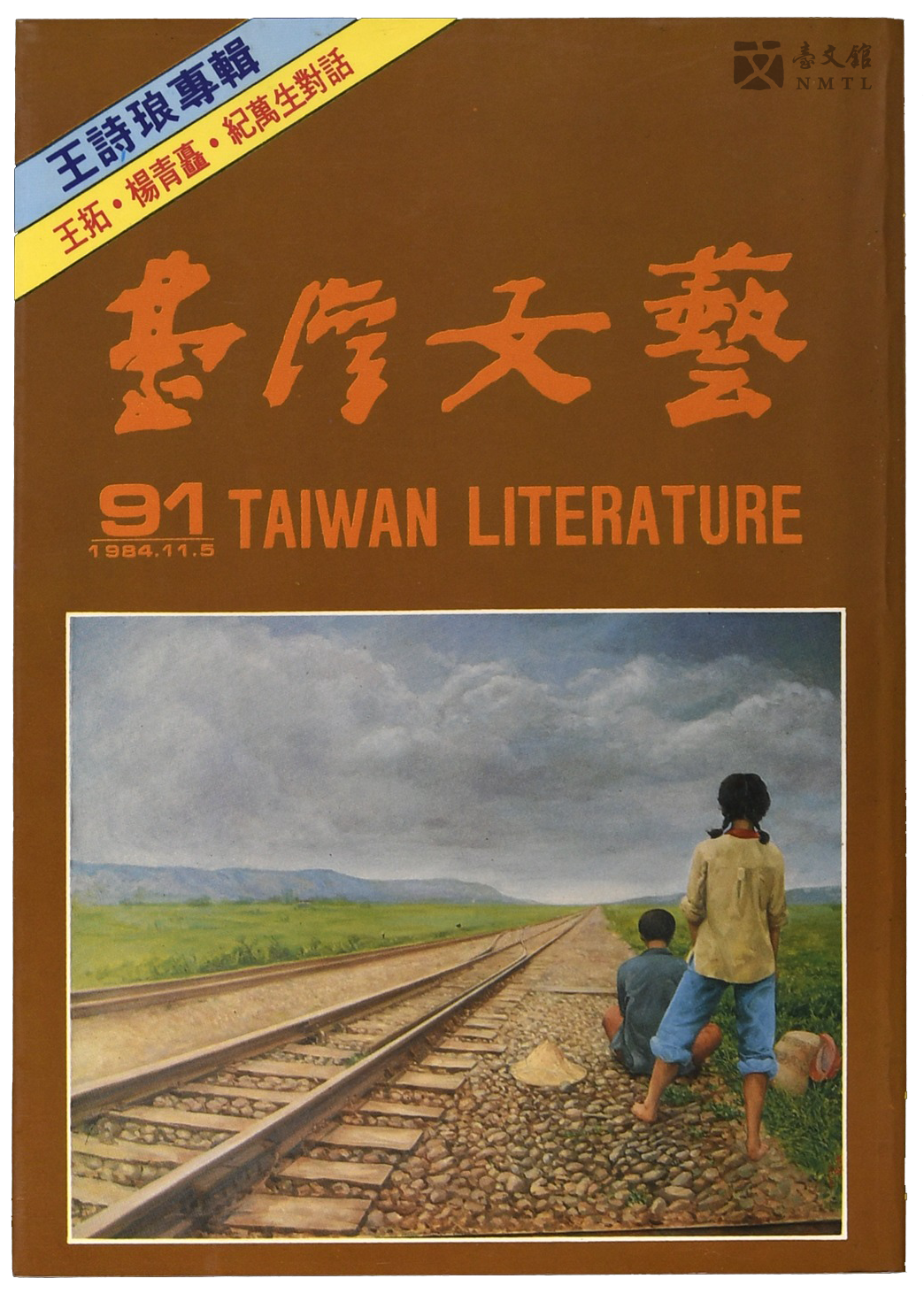
◰ Issue 91 of TAIWAN LITERARY
Founded in 1964 by Wu Cho-liu, who claimed that literature reflects one's life; it was inclined to literary realism. In the 1980s, social issues and the democratization movement in Taiwan gained more and more attention. This issue was banned because of its special feature on Wang Shi-lang.(Kept in National Museum of Taiwan Literature)
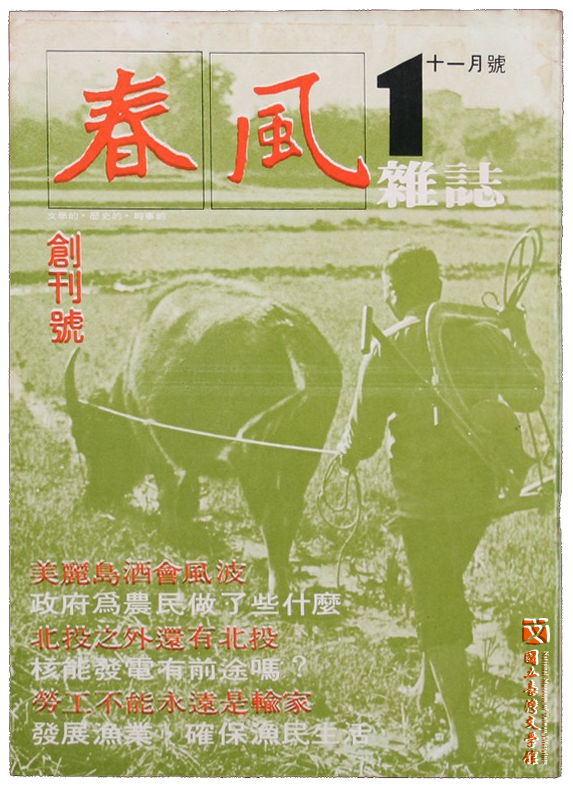
◰ First Issue of SPRING BREEZE, November 1979
Poet Chan Che acted as the publisher, while Wang To, Yang Kuei, and Chen Ying-chen participated in internal work. The publication was inclined toward speaking up for laborers and farmers. It was banned because of its criticism of the politics and fight for Taiwanese identity.(Kept in National Museum of Taiwan Literature)
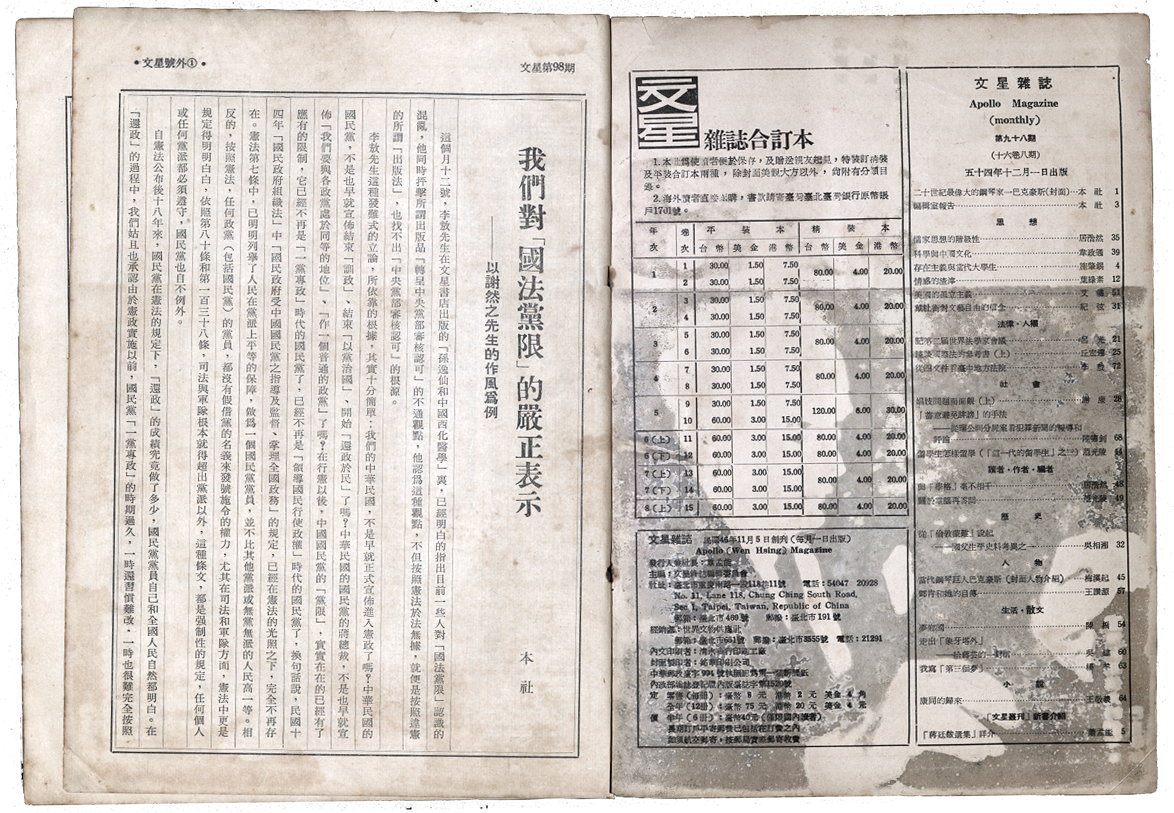
◰ "Our Solemn Response to 'National Laws and Party Regulations'"
Regarding the banning of Issue 97 of APOLLO MAGAZINE, an editorial was published in Issue 98 to point out the many unreasonable facets of the one-party system and speech censorship by giving concrete examples. As expected, this issue was banned. Before the 99th issue was released, the publication was forced to be suspended by the government.(From the collection of the library at the National Museum of Taiwan Literature)
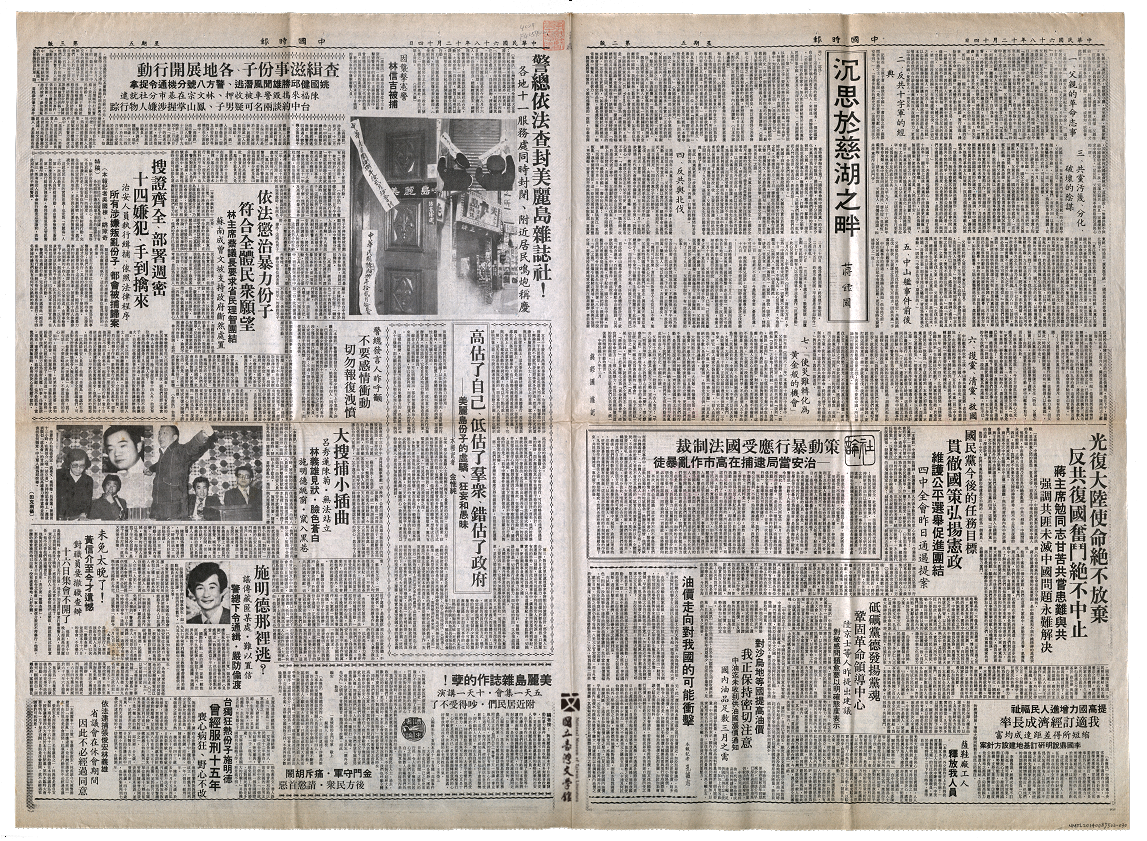
◰ "Taiwan Garrison Command Seizes Formosa Magazine Press" CHINA TIMES, December 14, 1979
After the Kaohsiung Formosa Incident broke out in 1979, the Taiwan Garrison Command seized the Formosa Magazine Press not only because of the sensitive content, but also an attempt to suppress dissent.(Kept in National Museum of Taiwan Literature)
